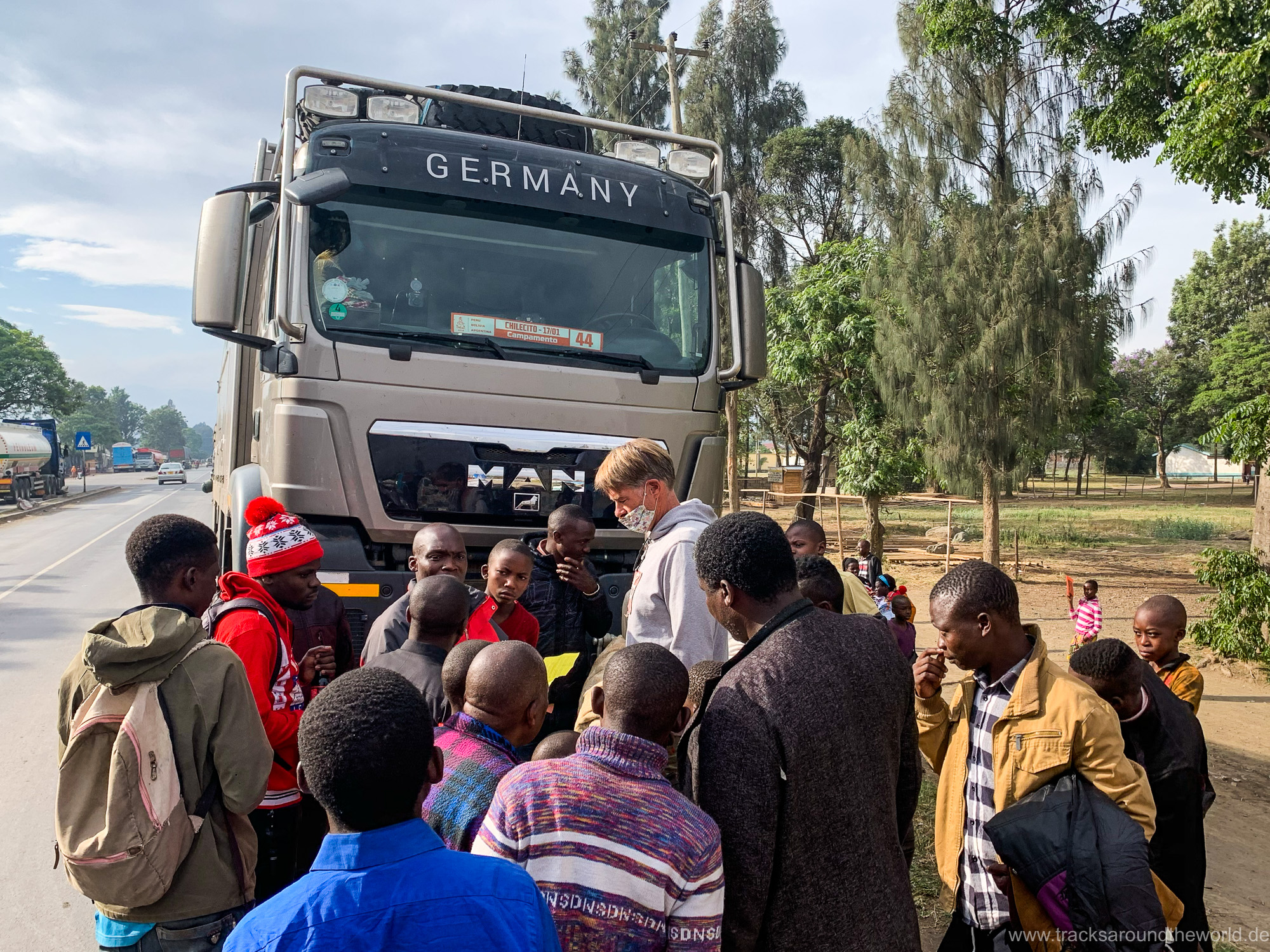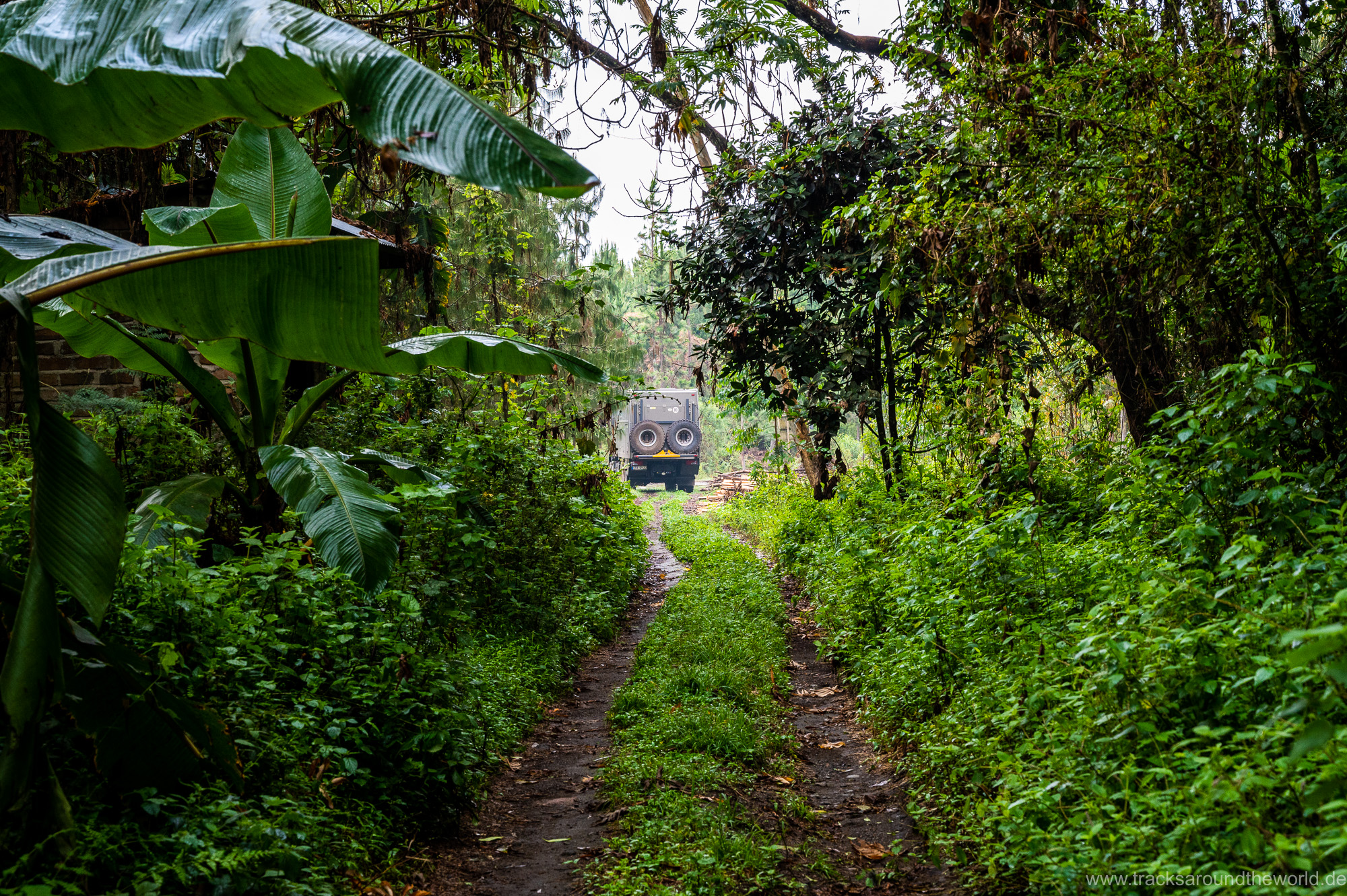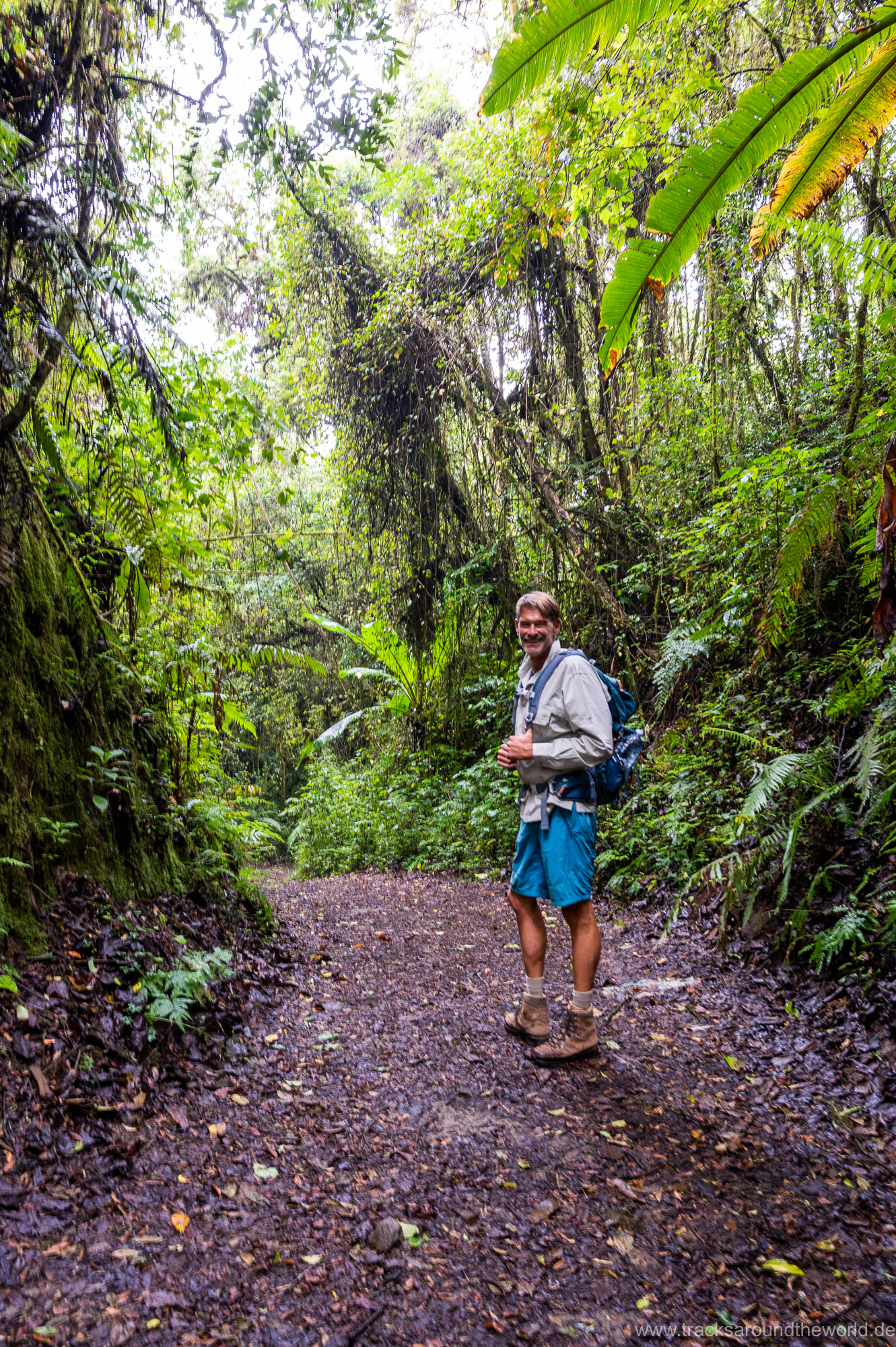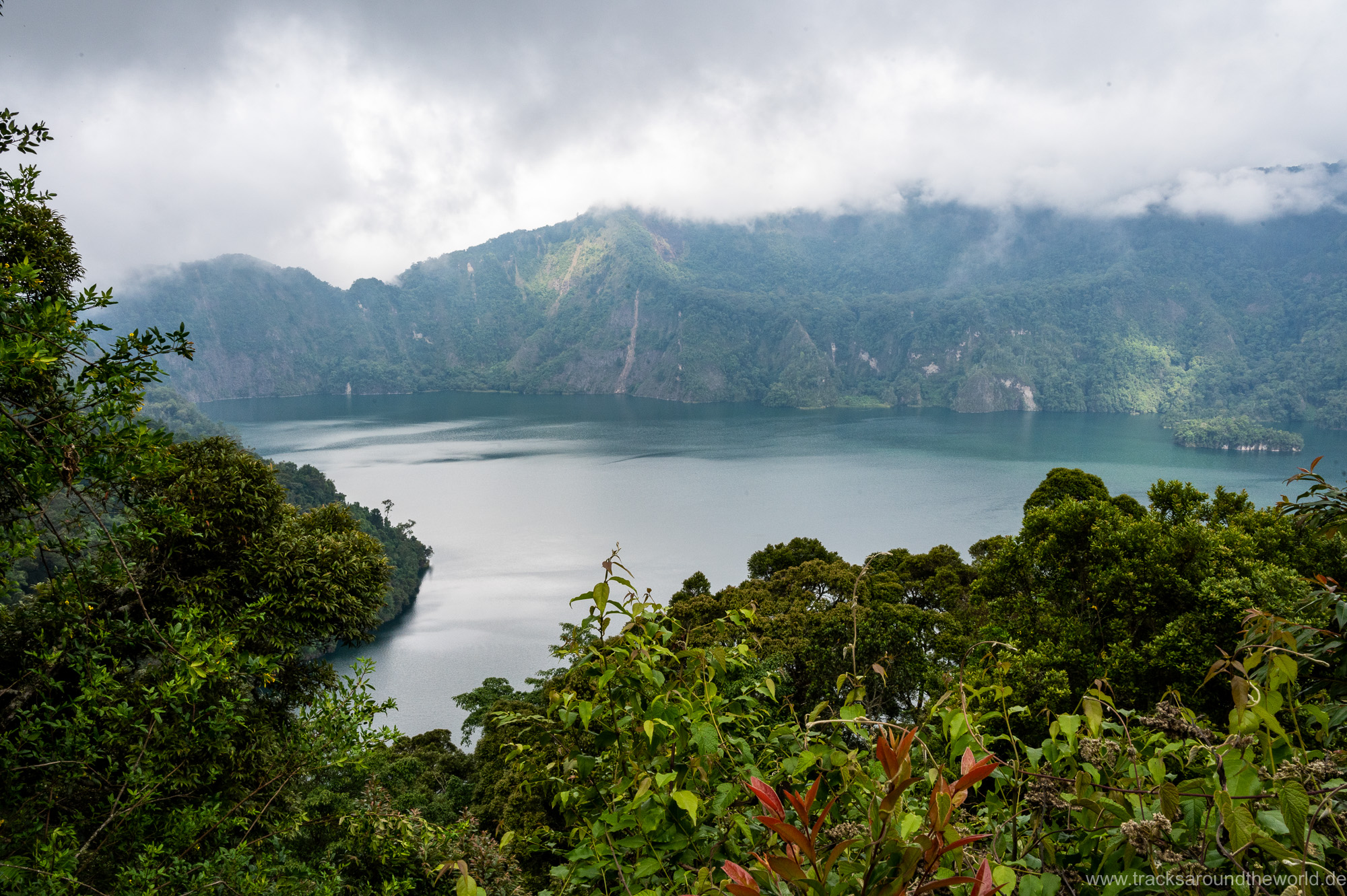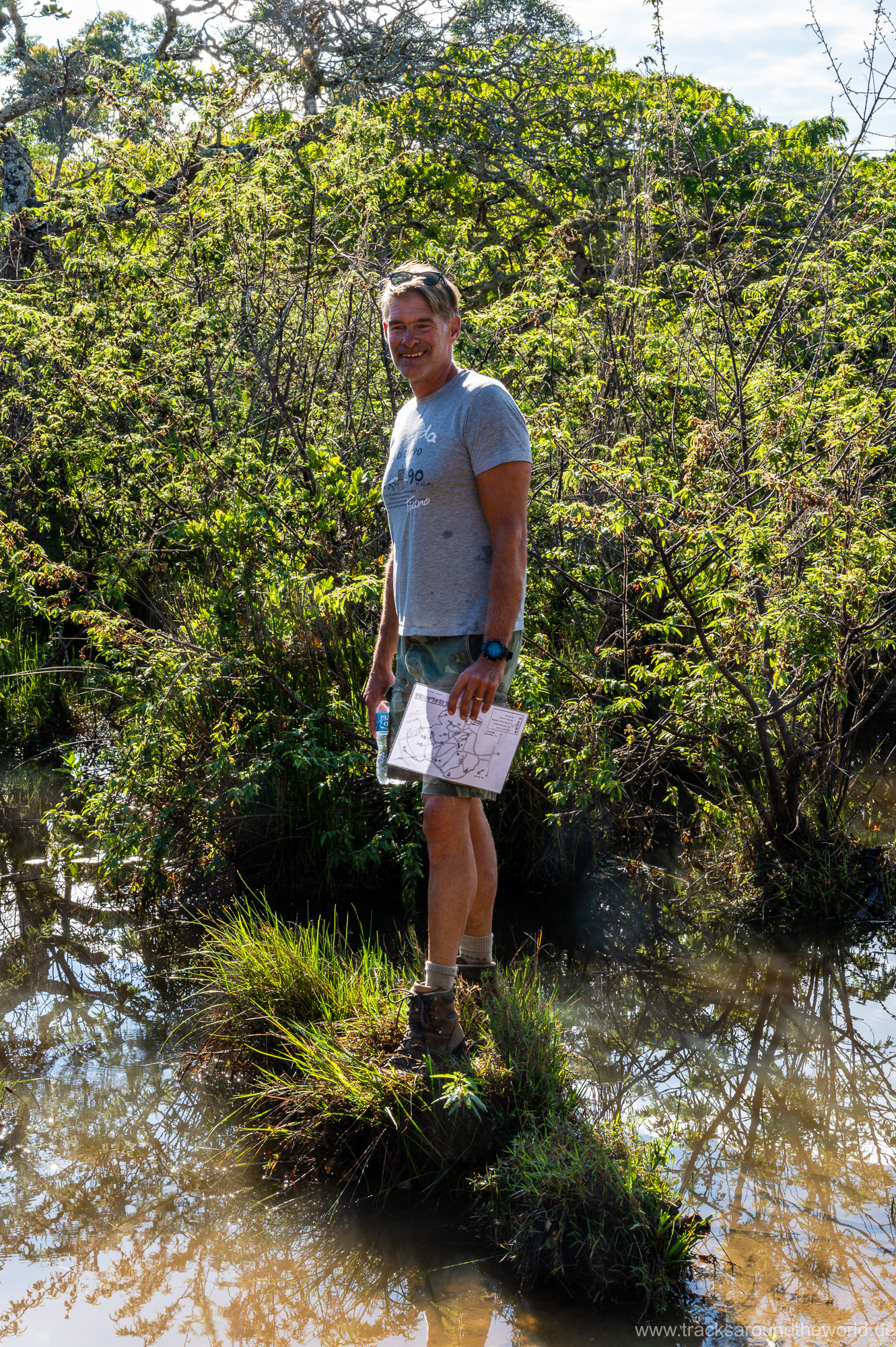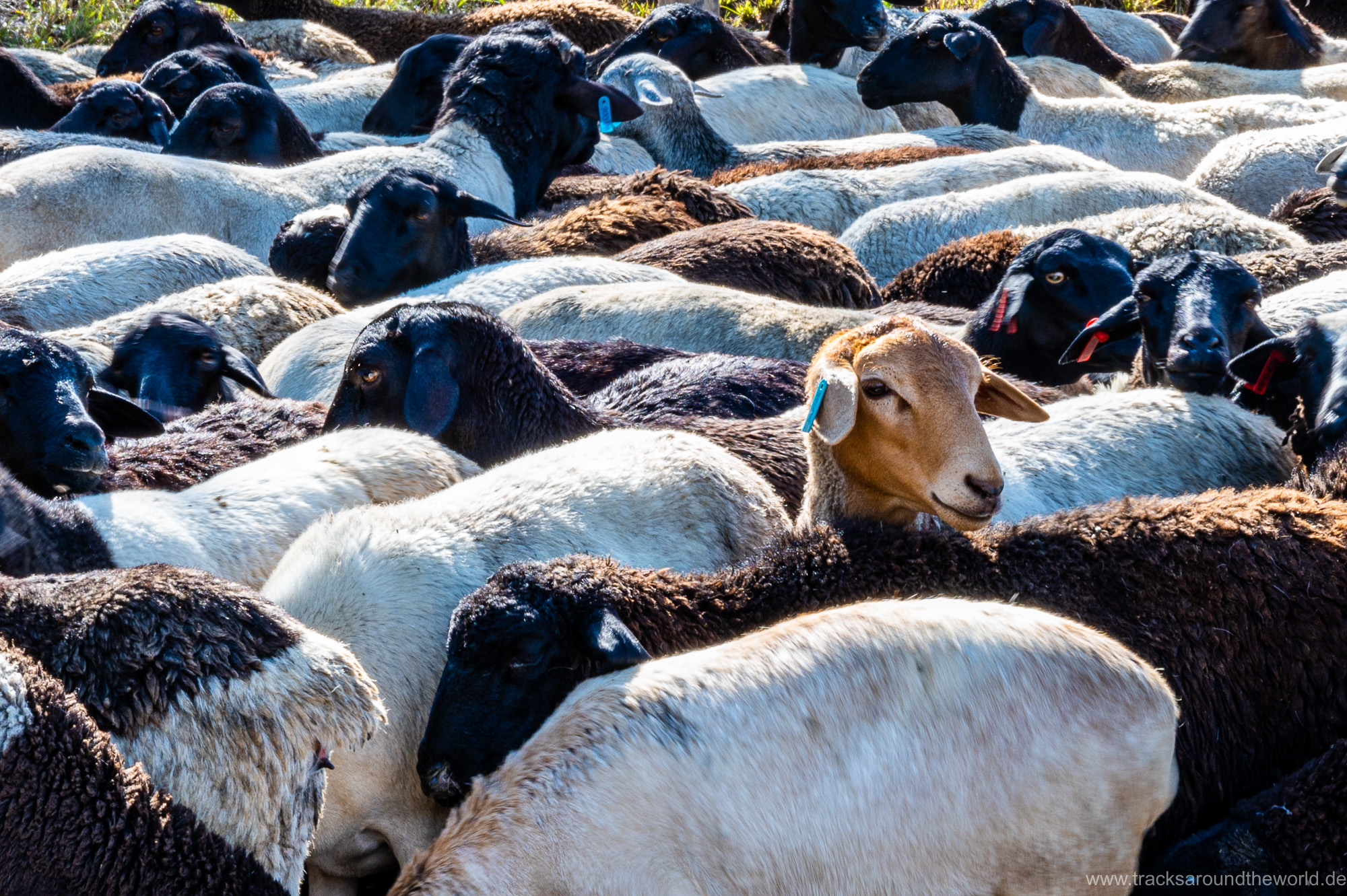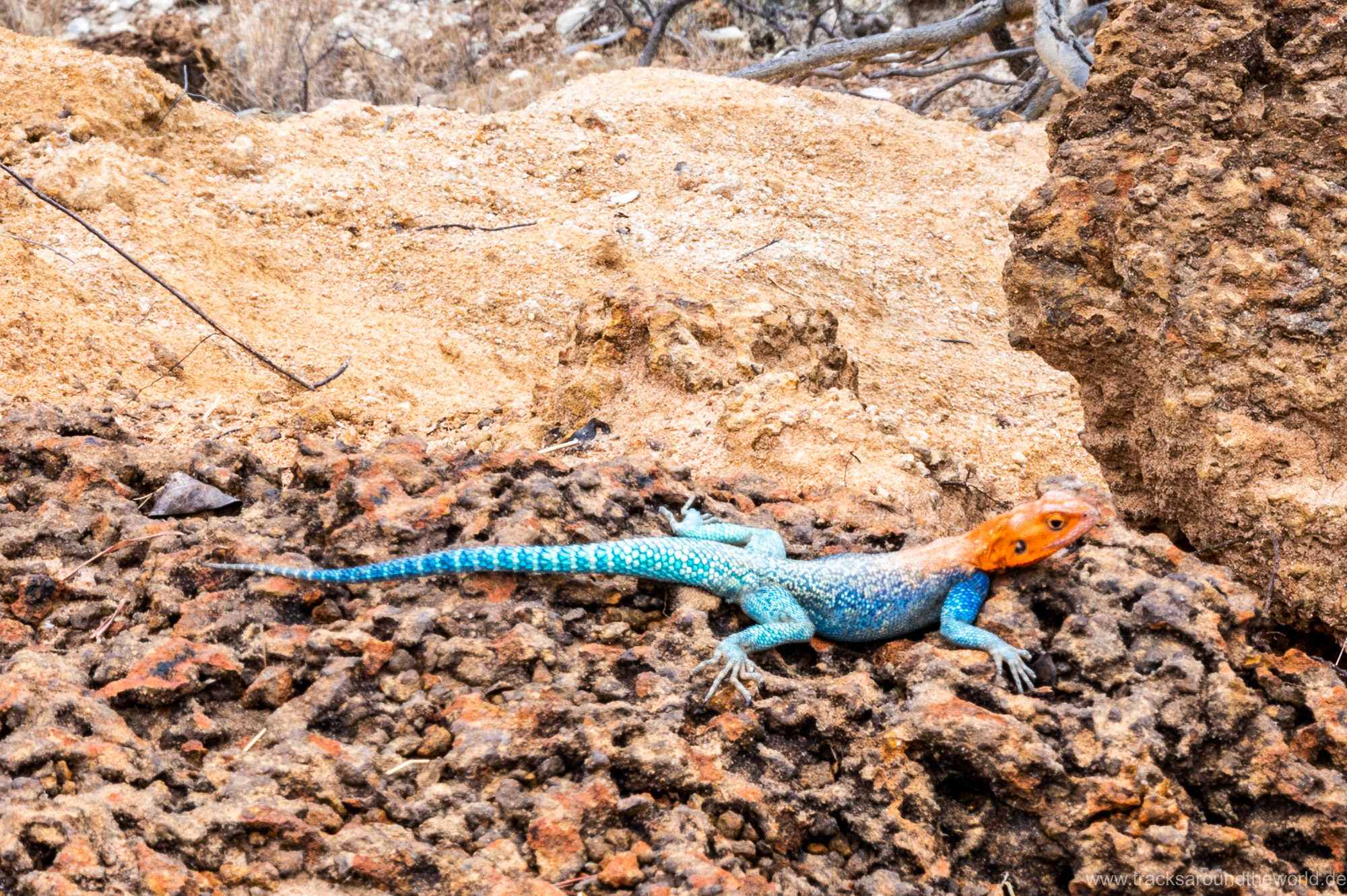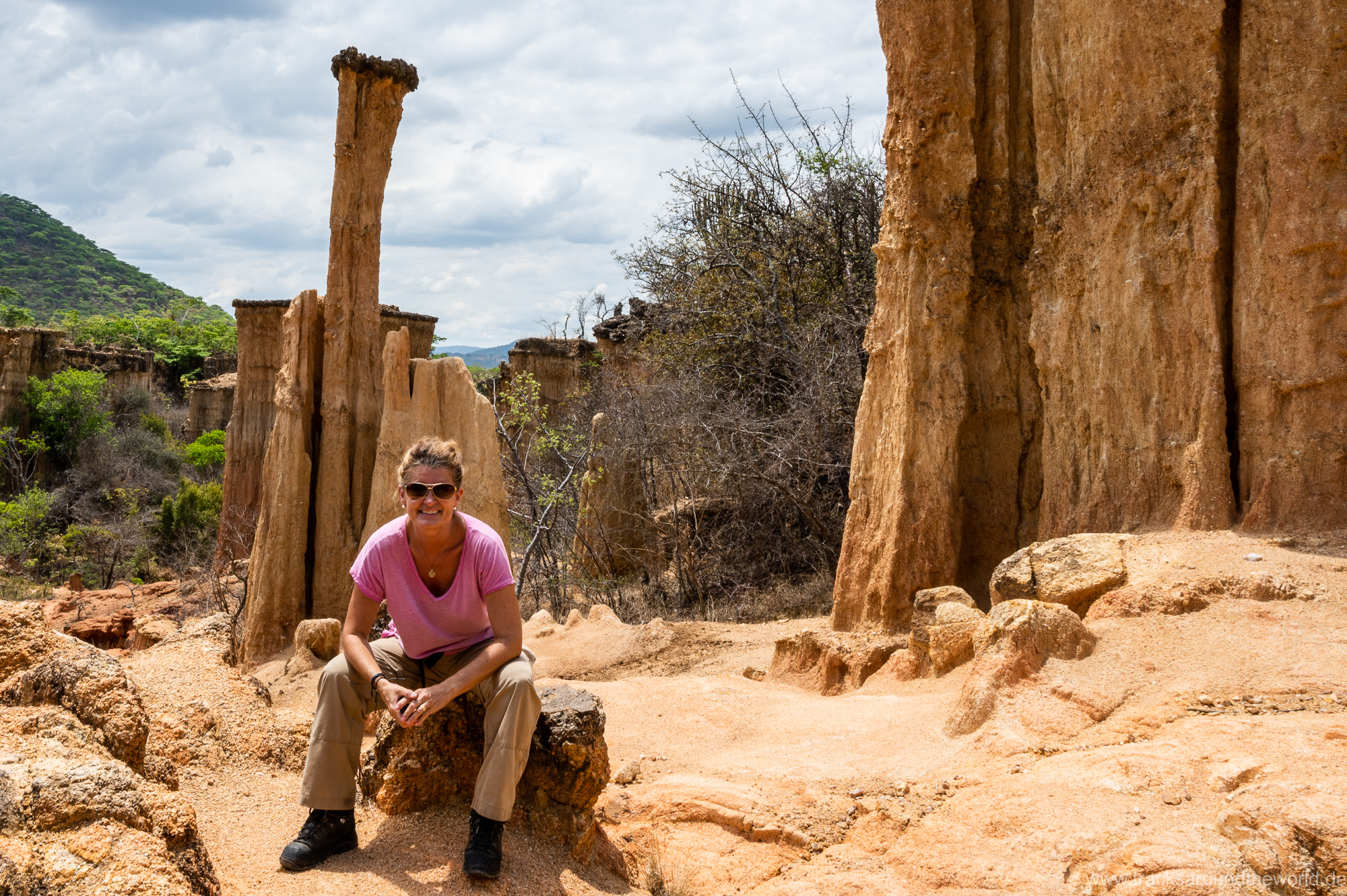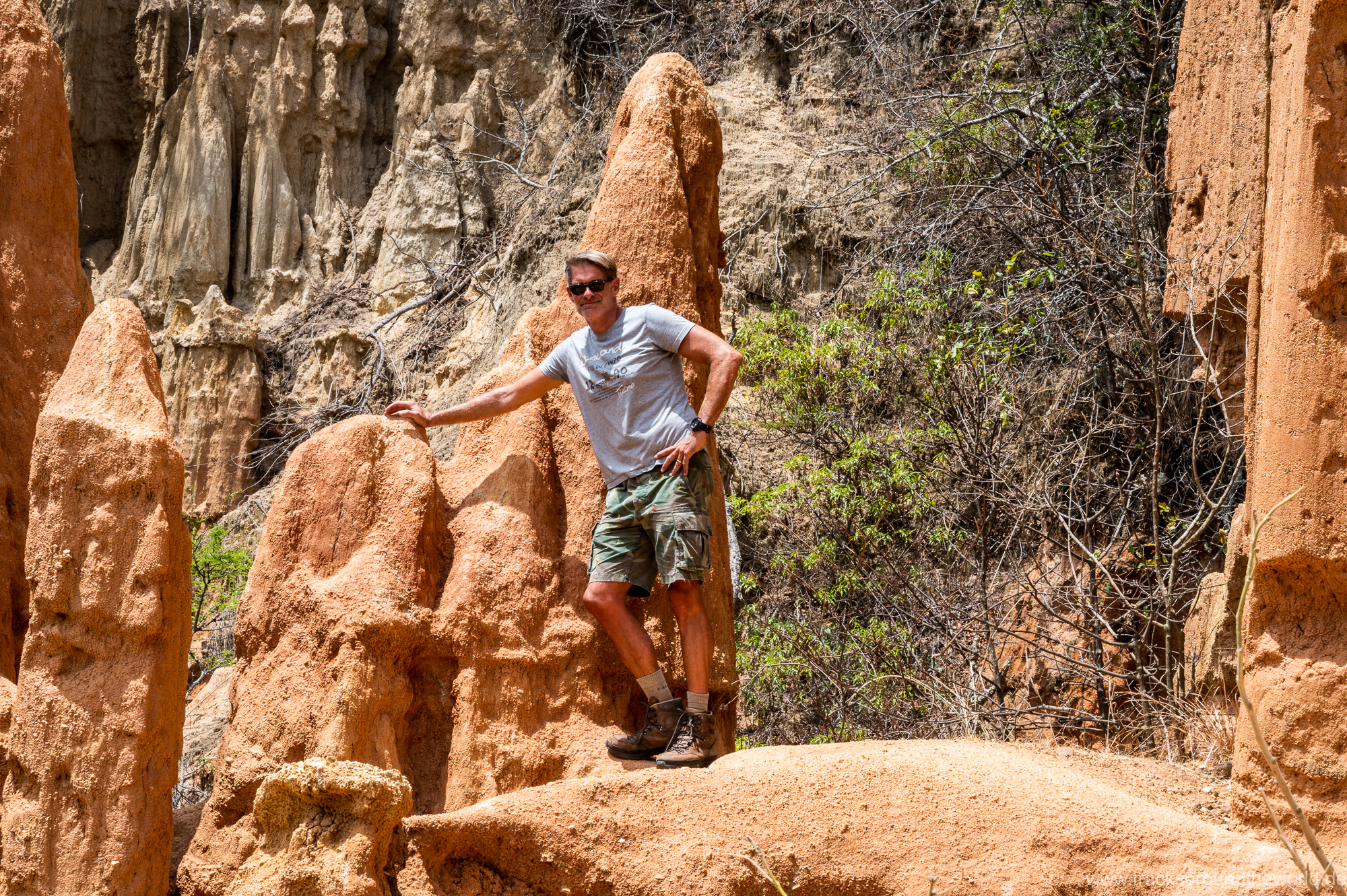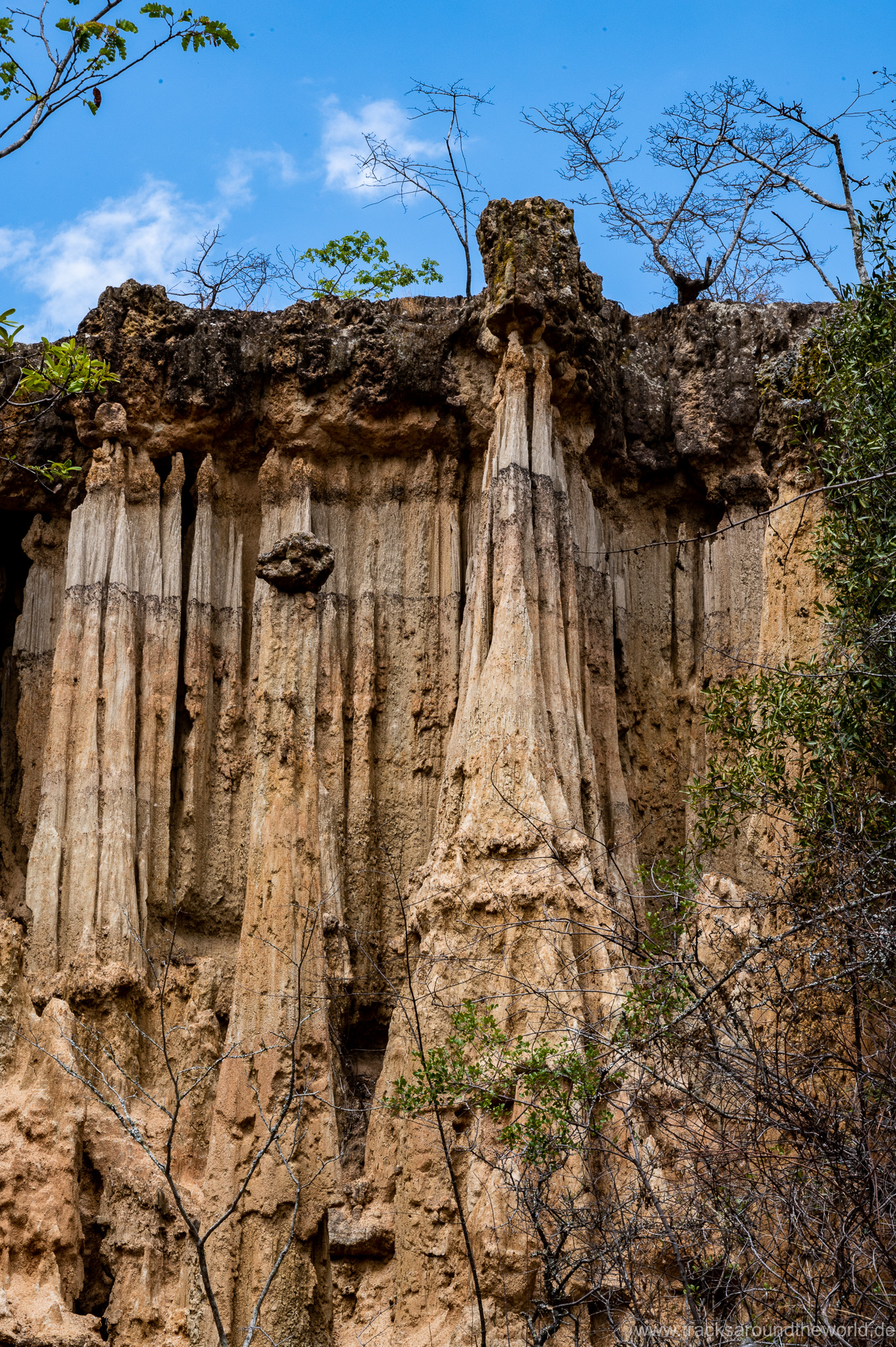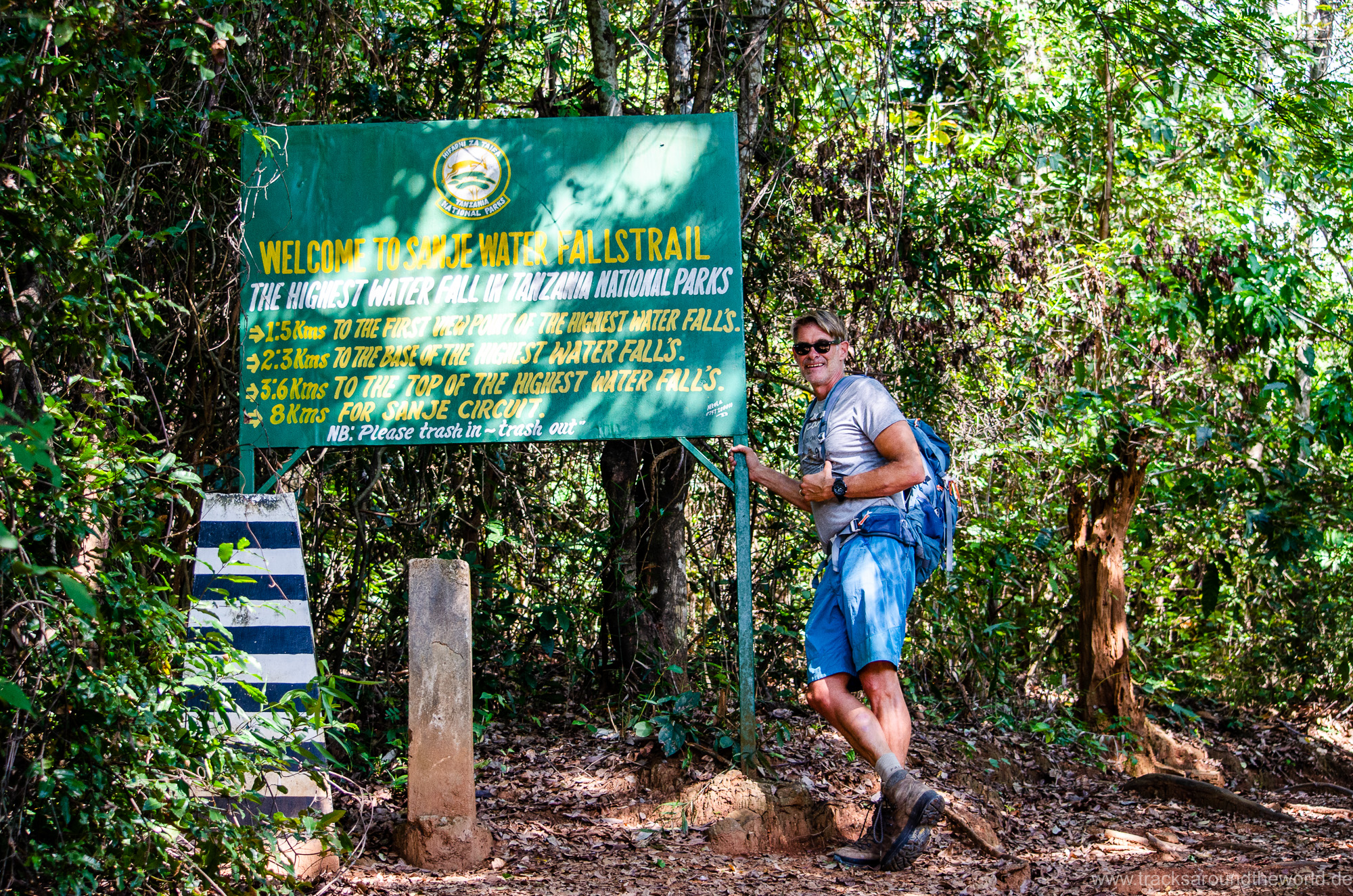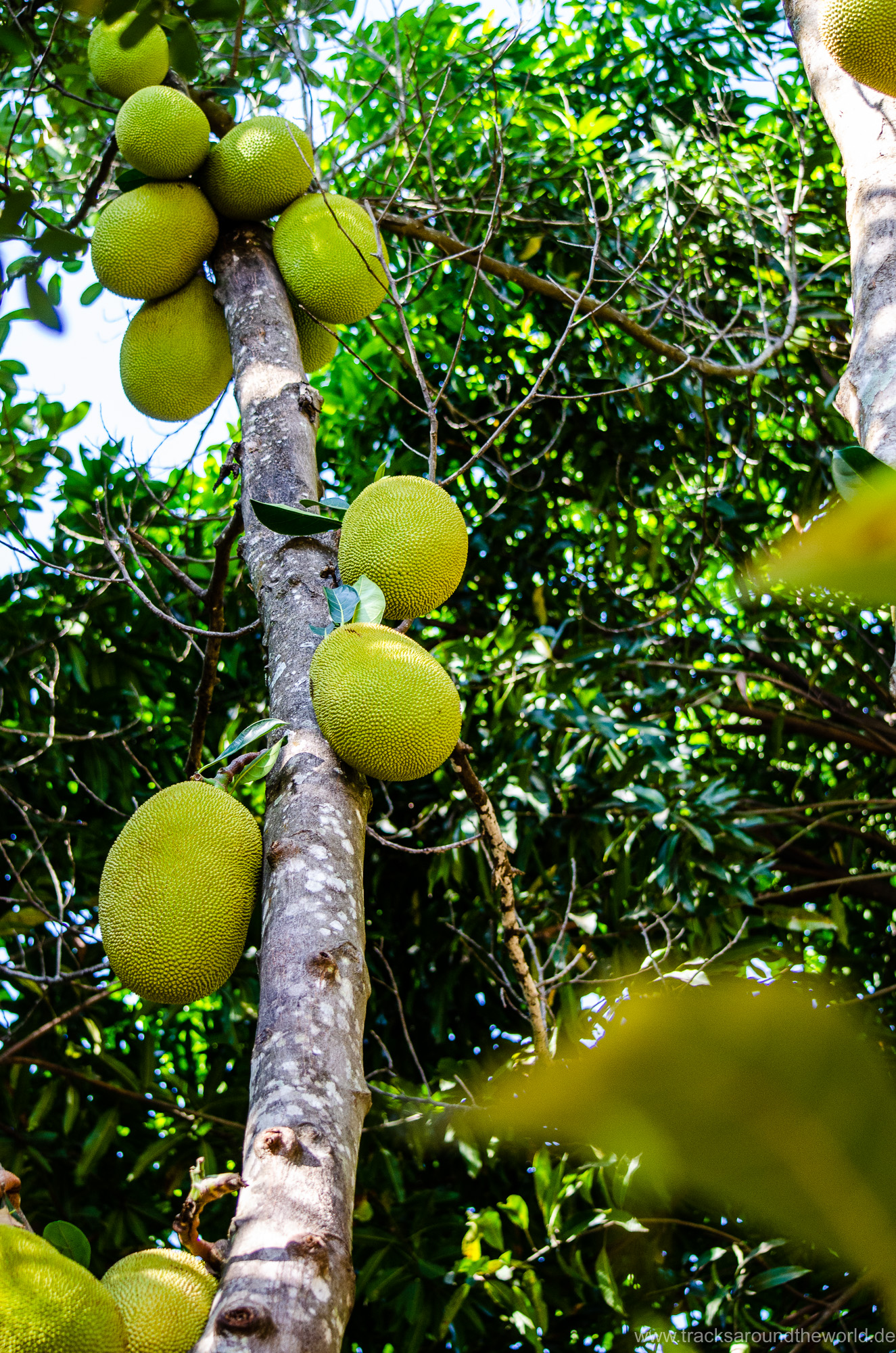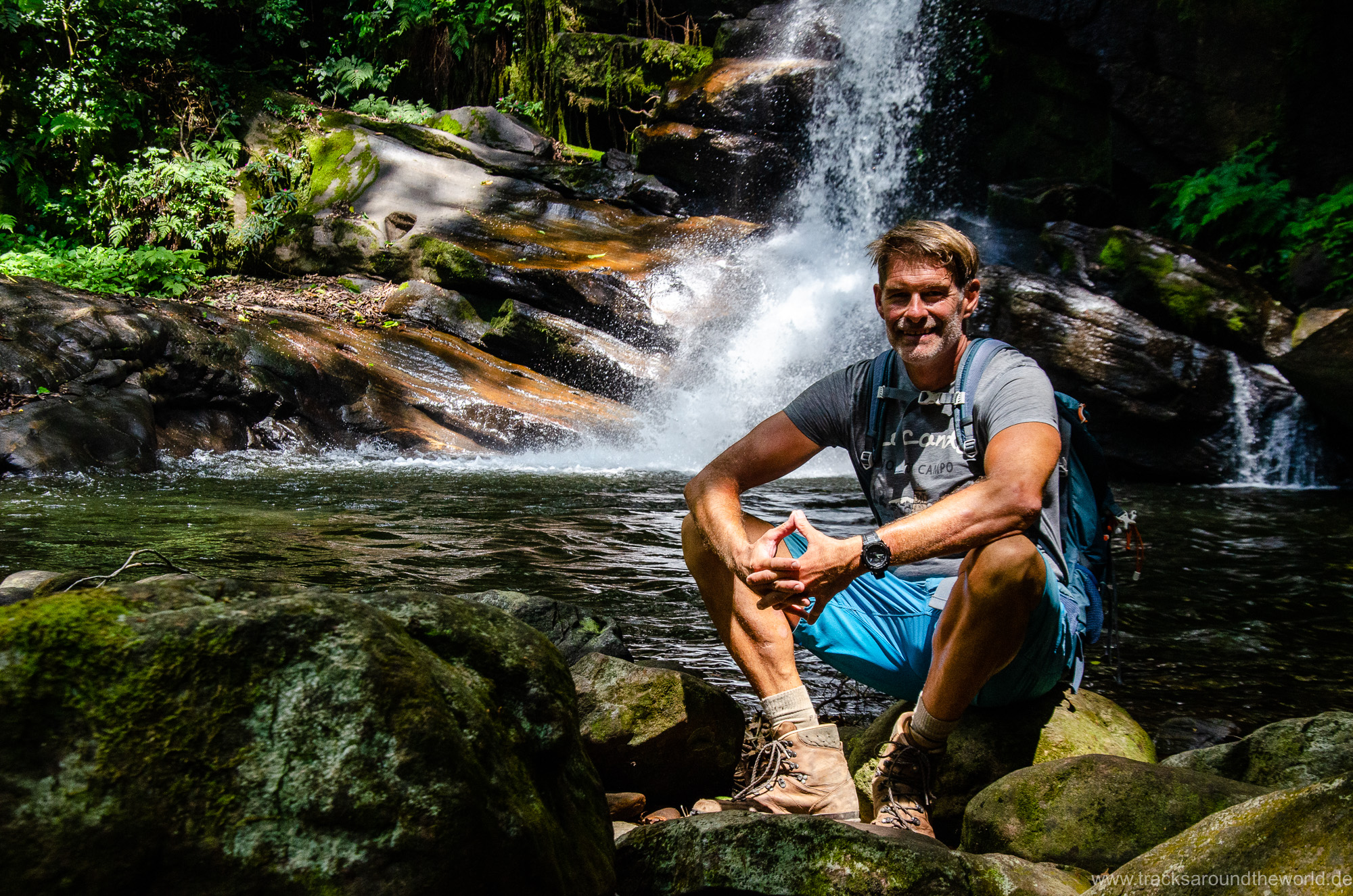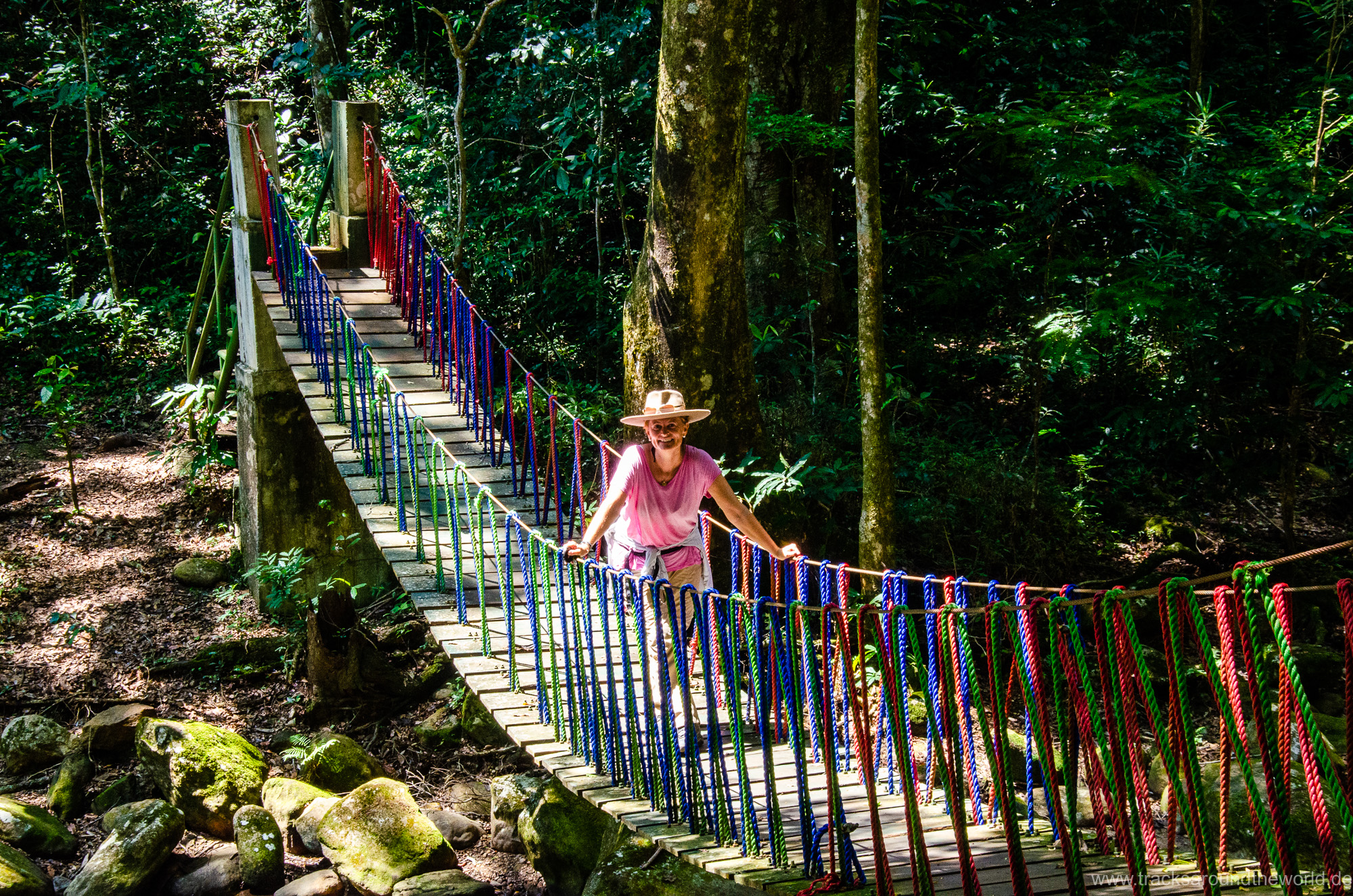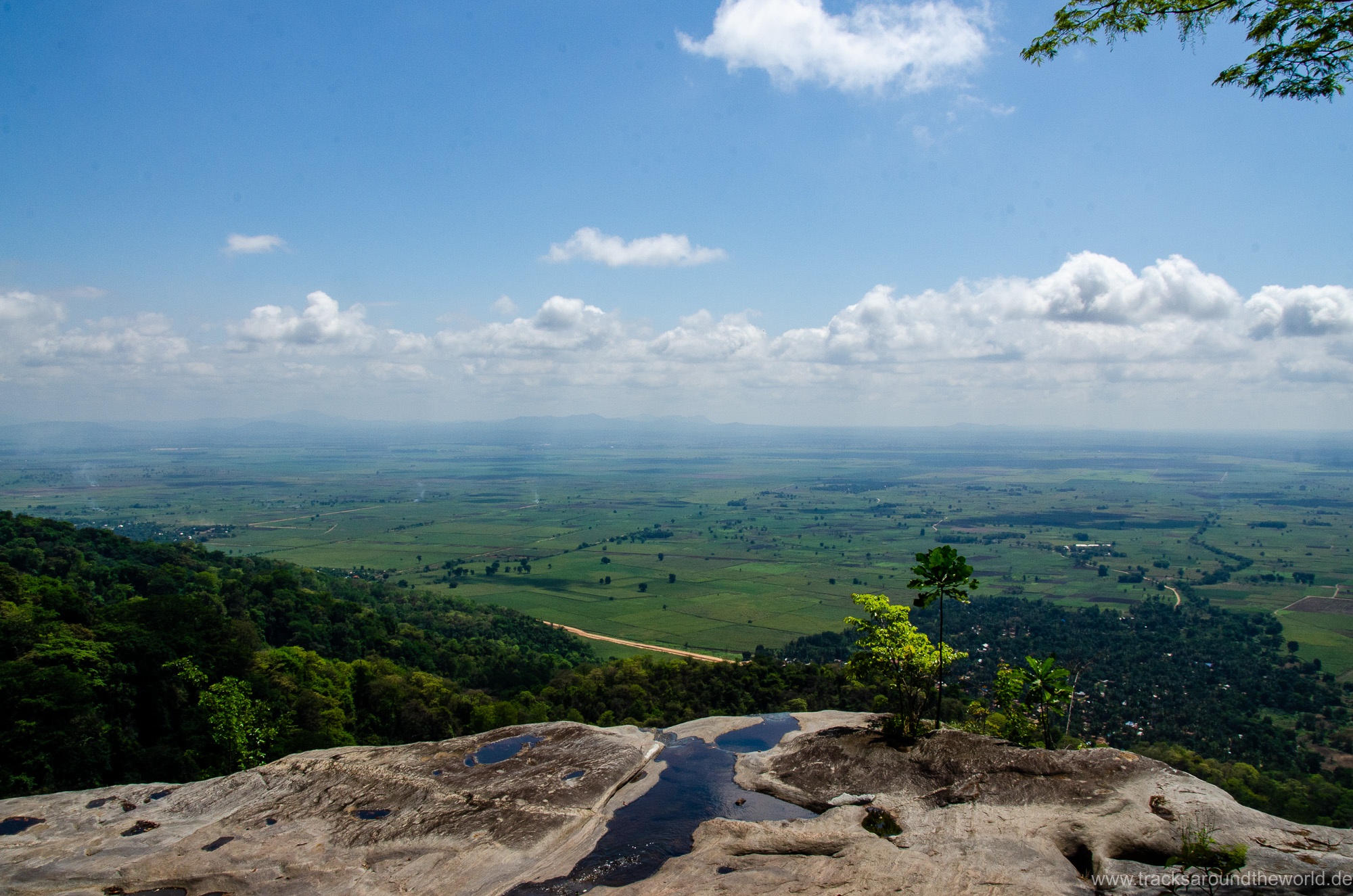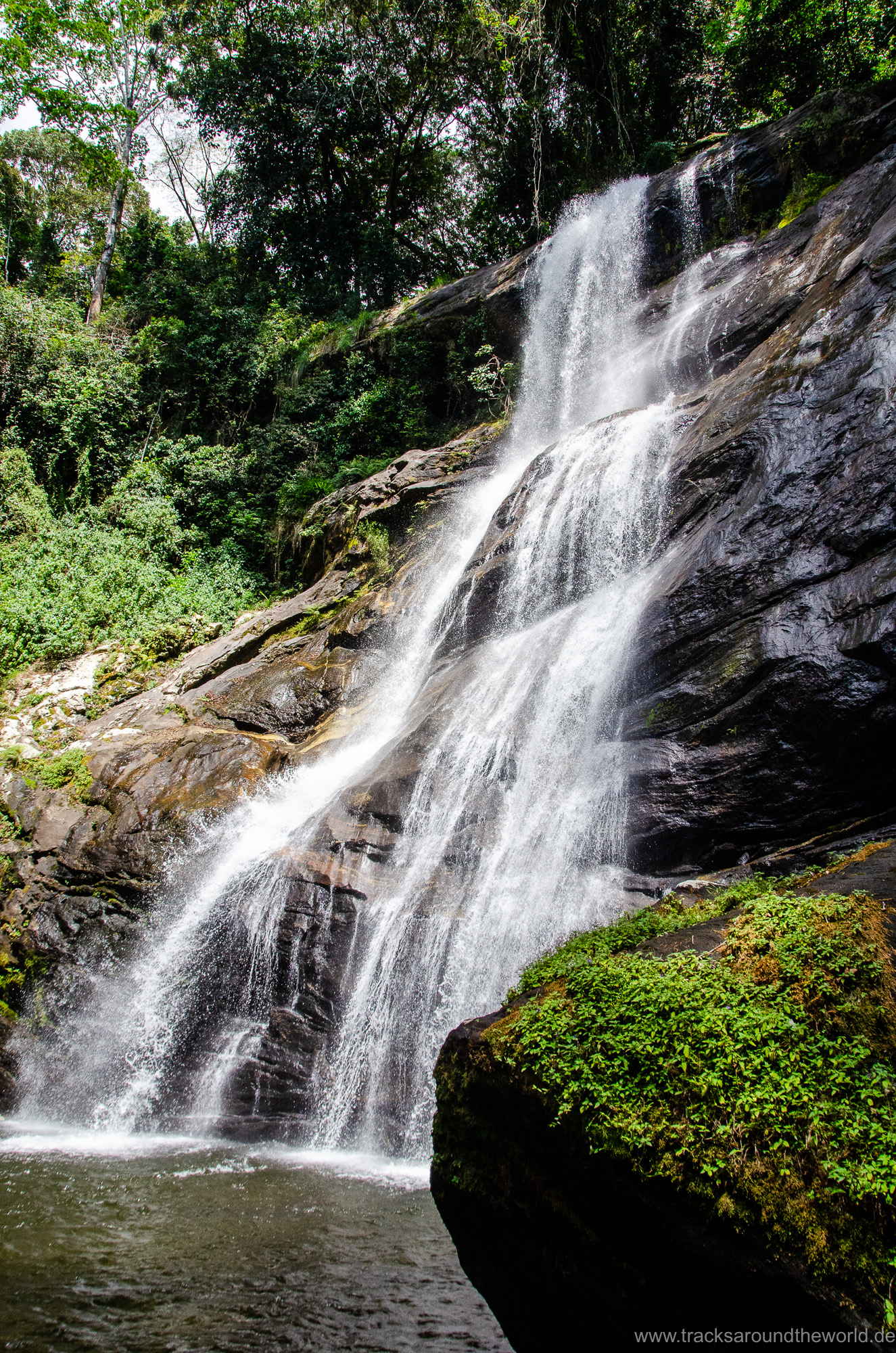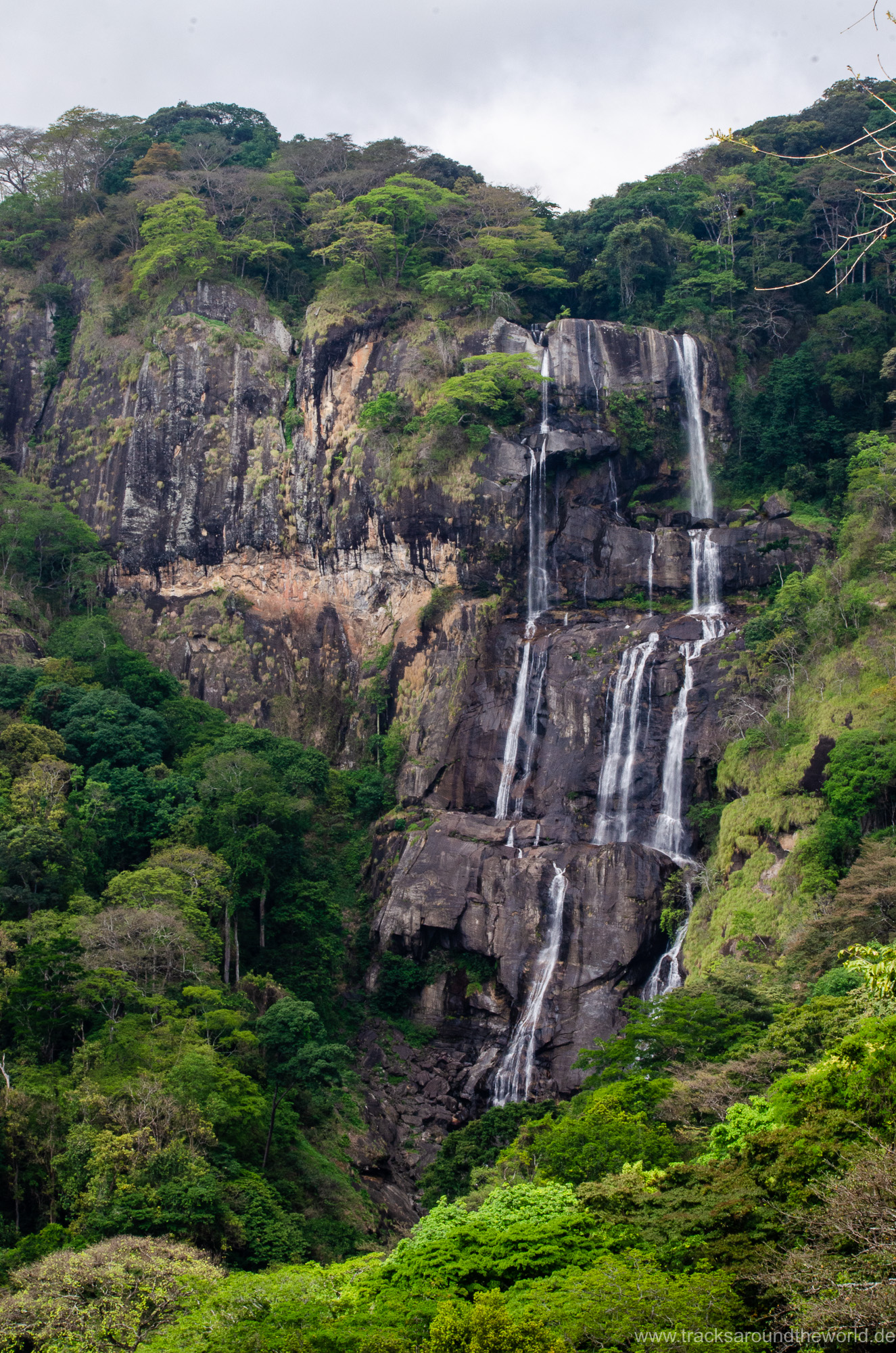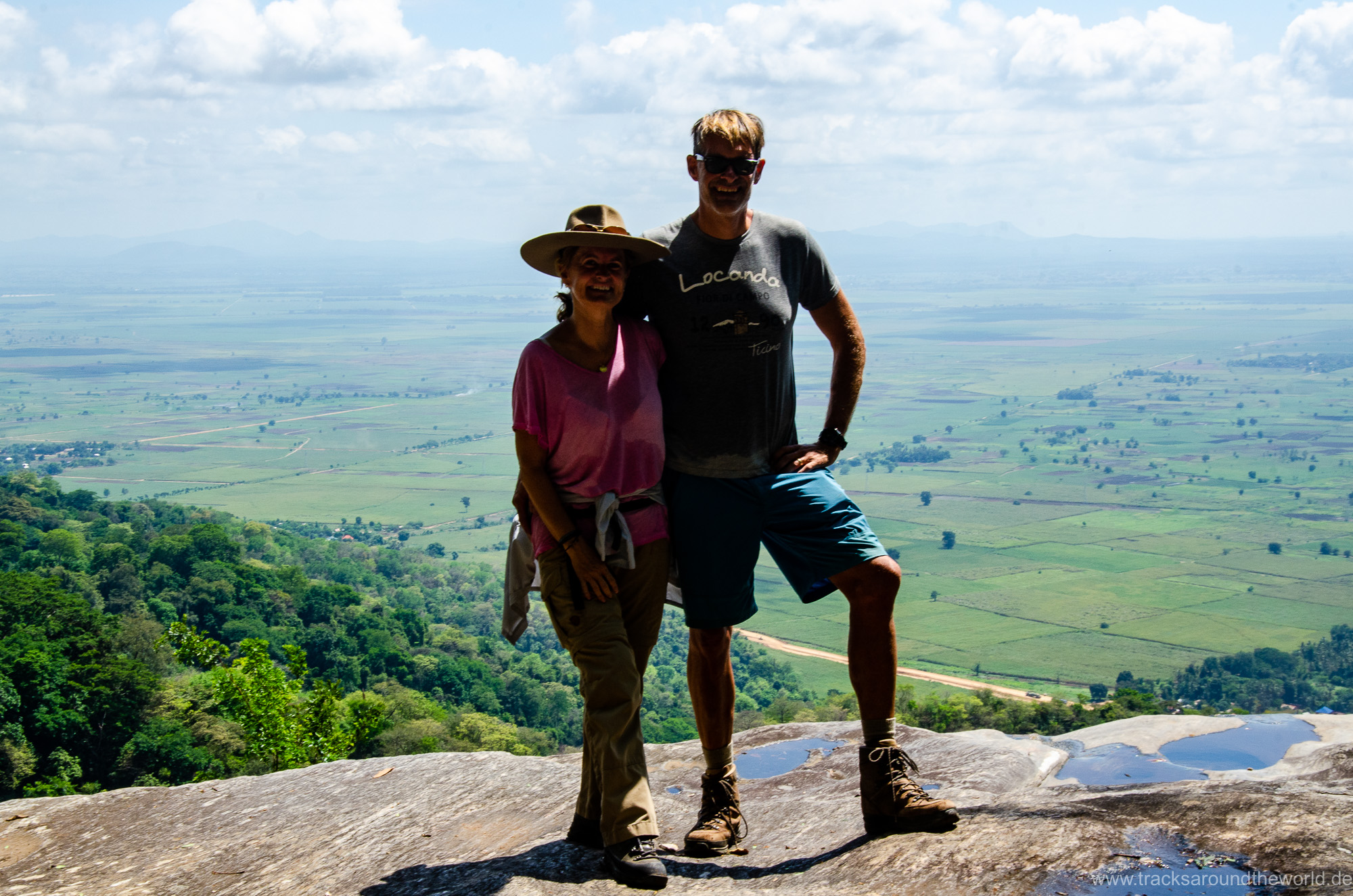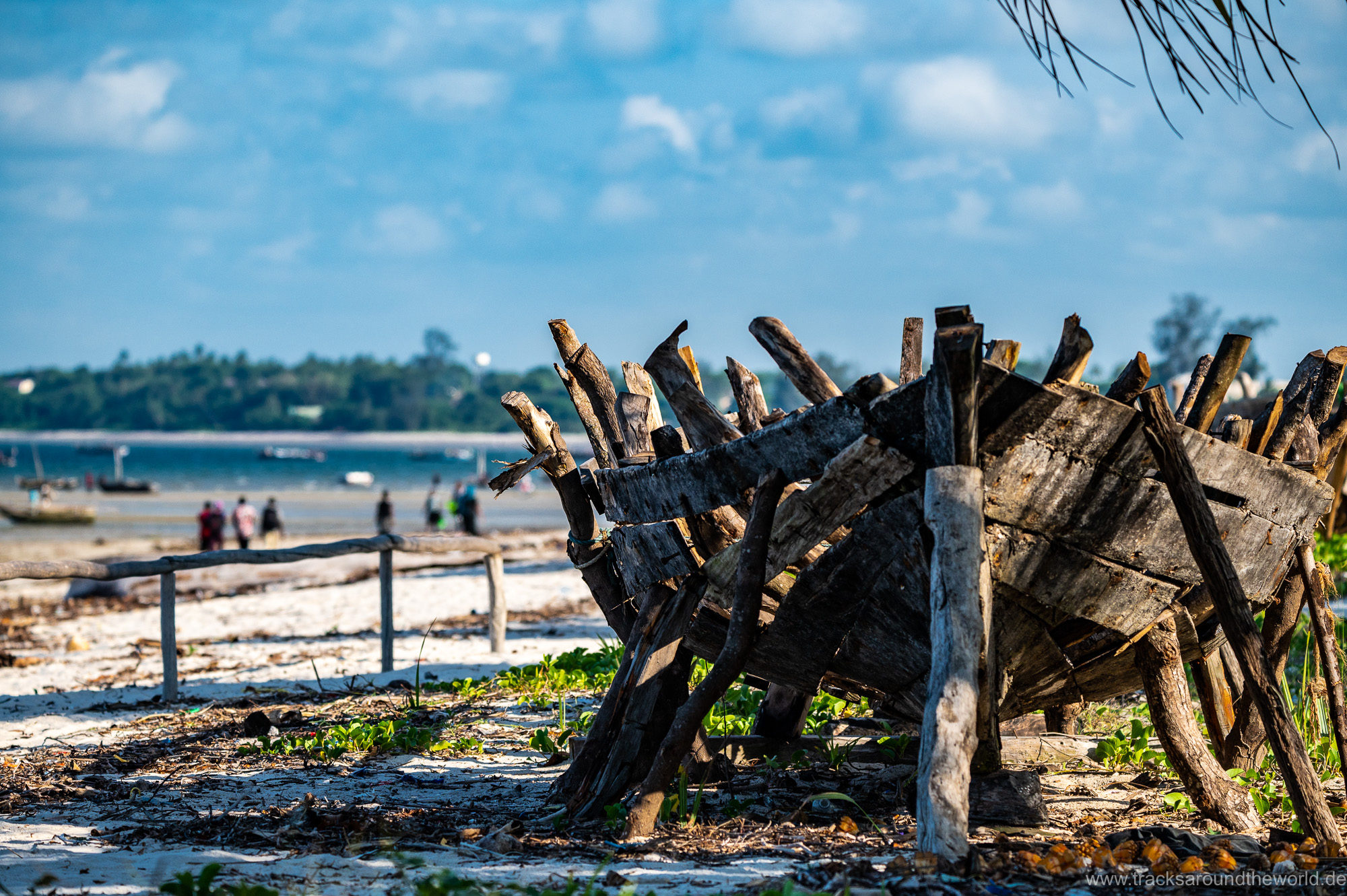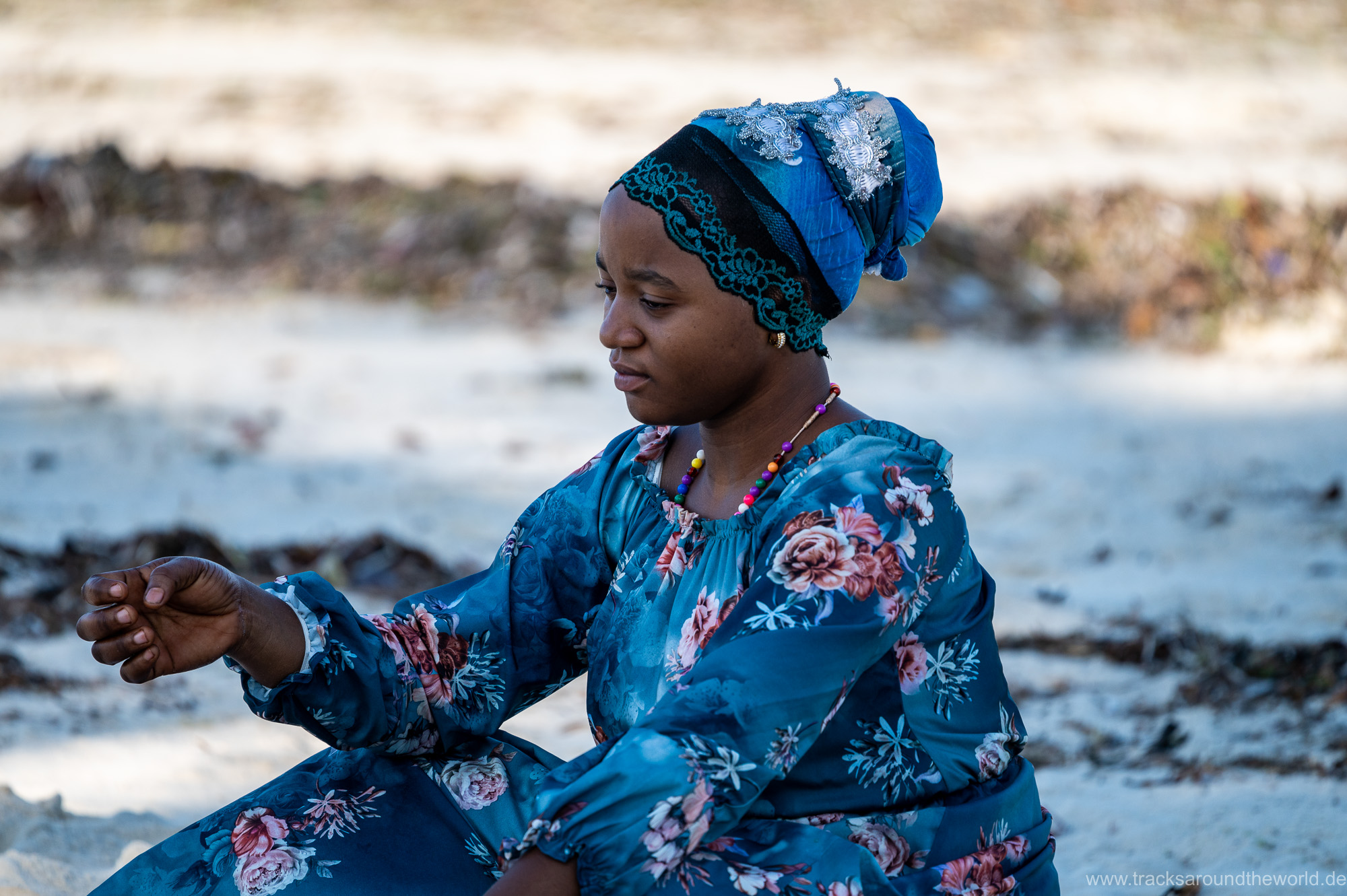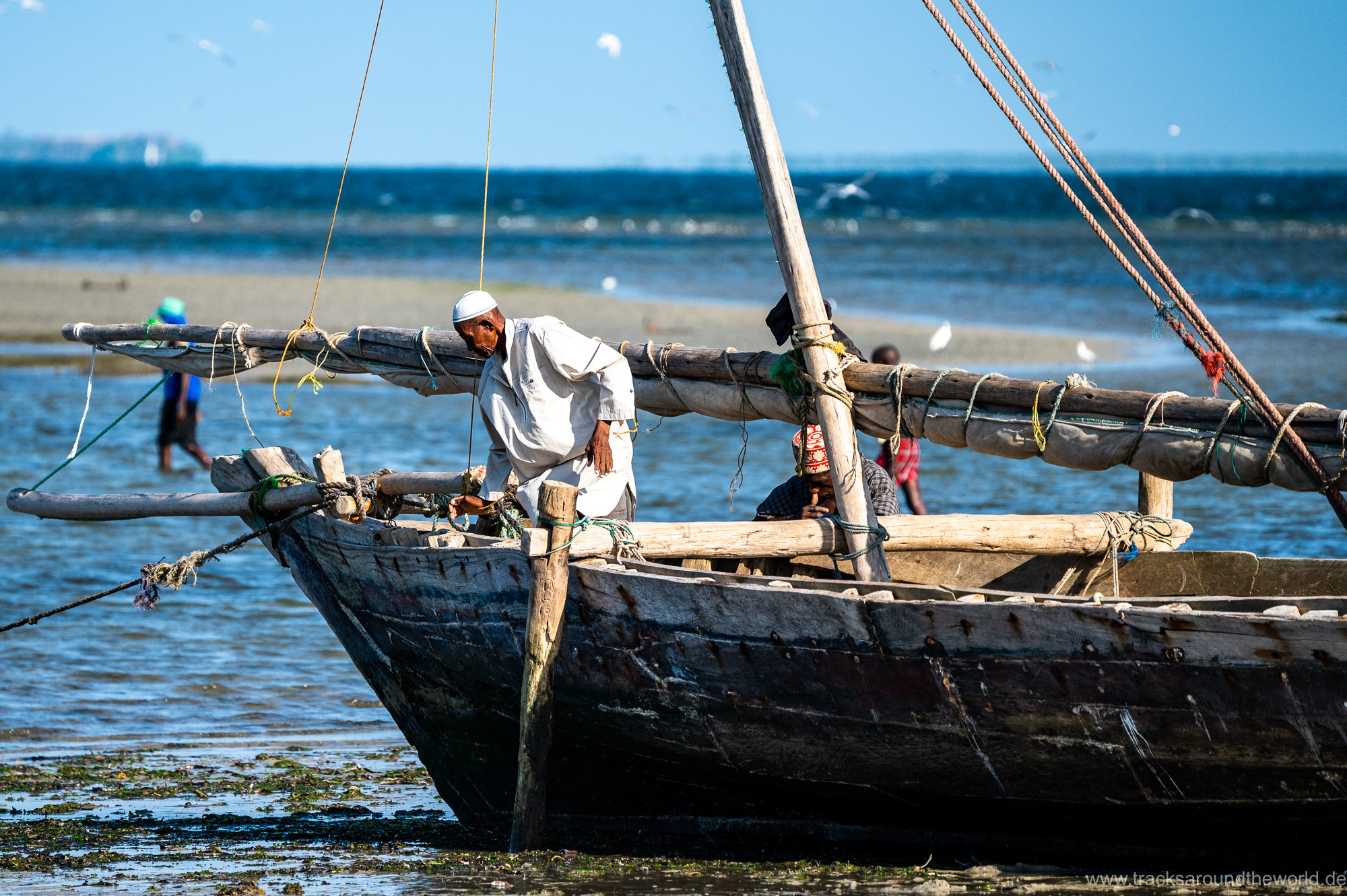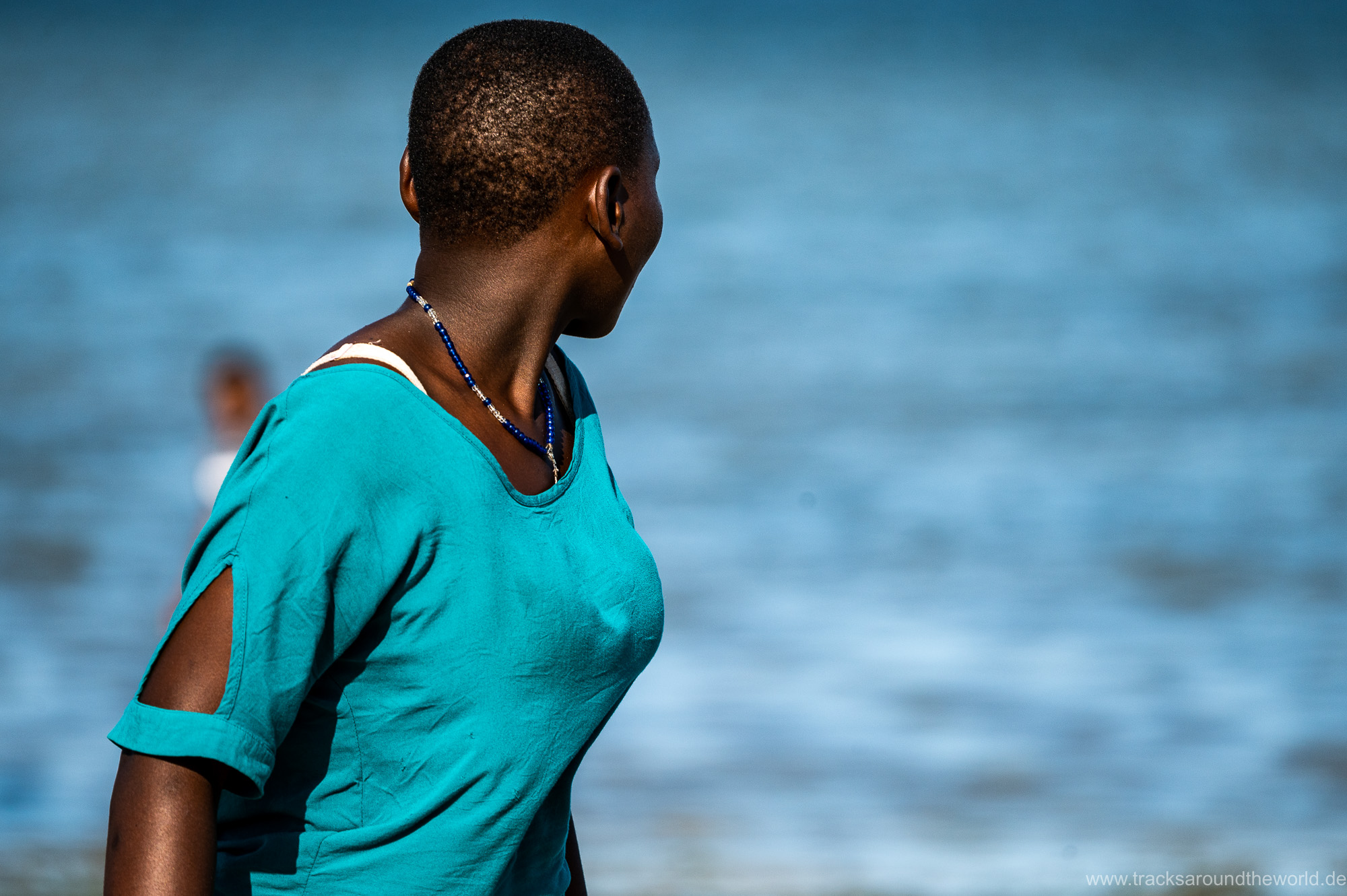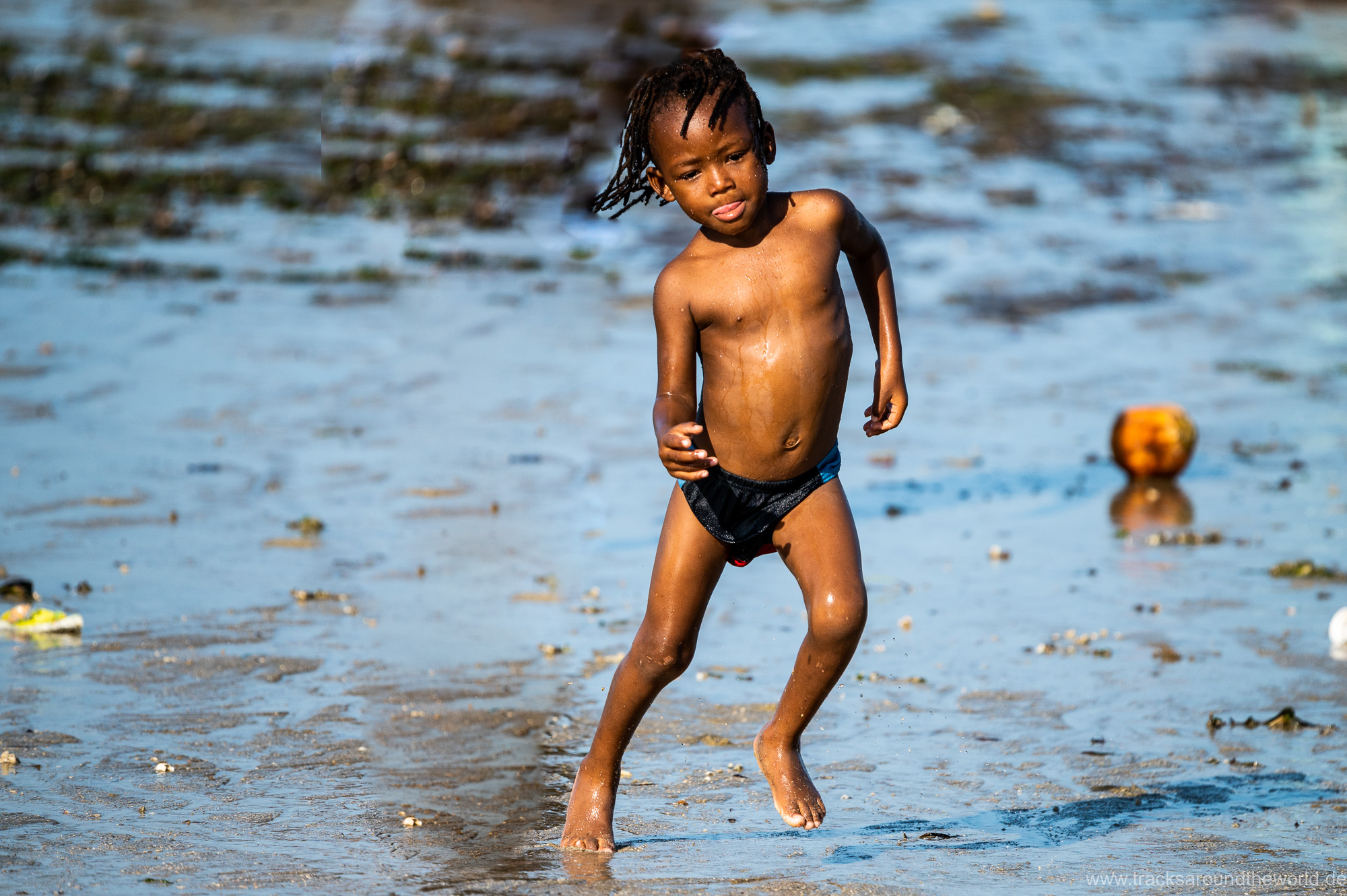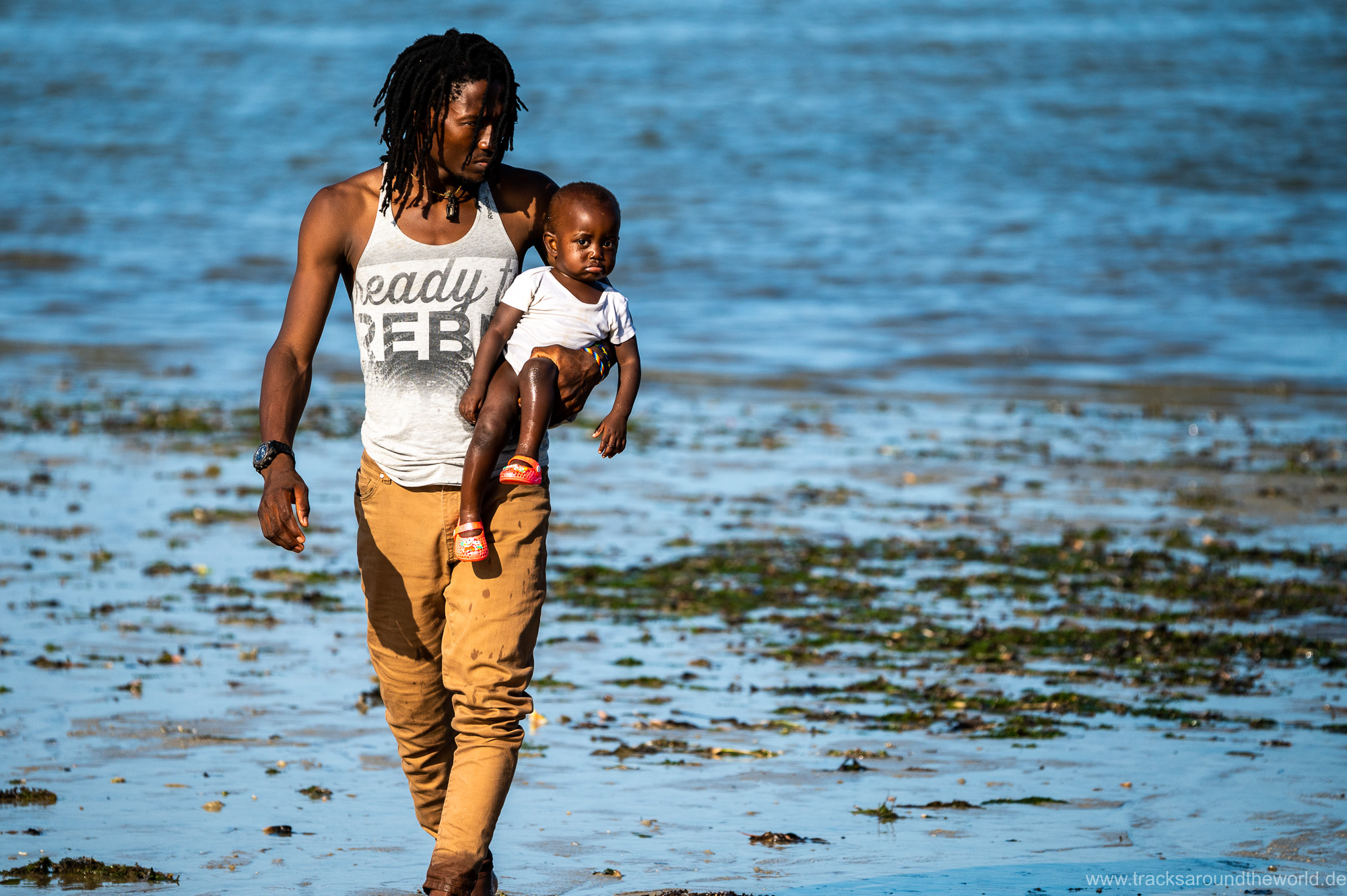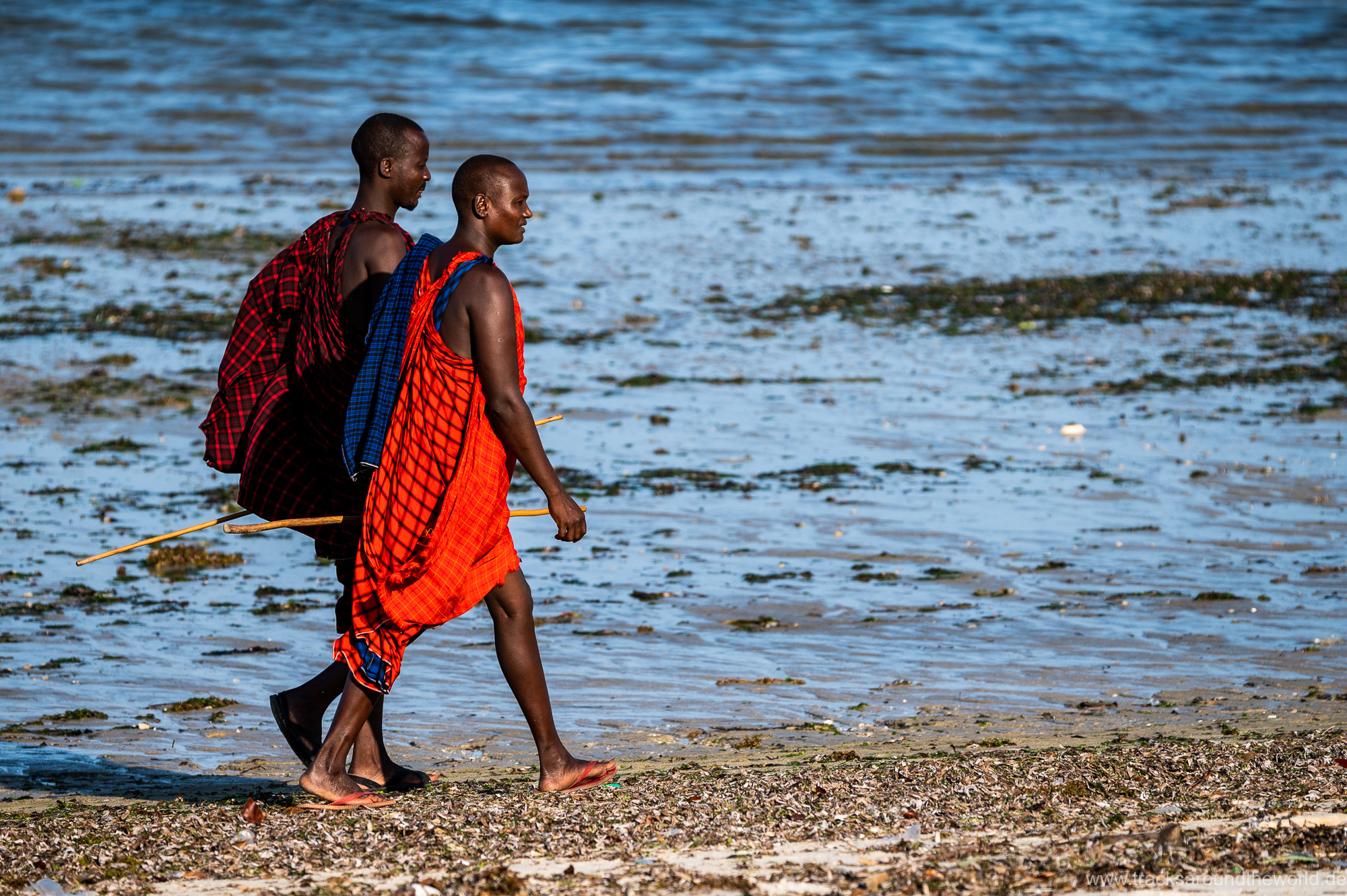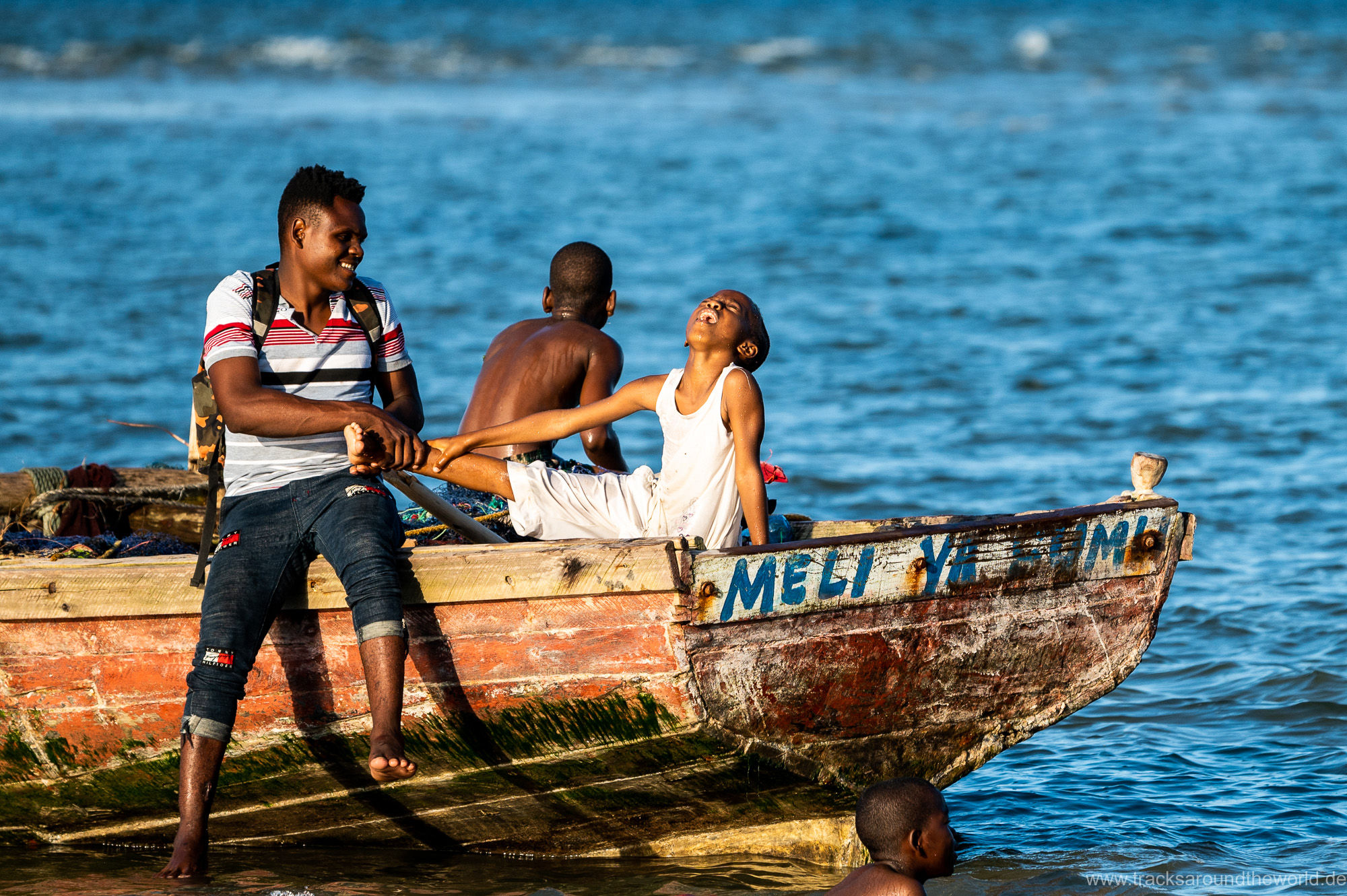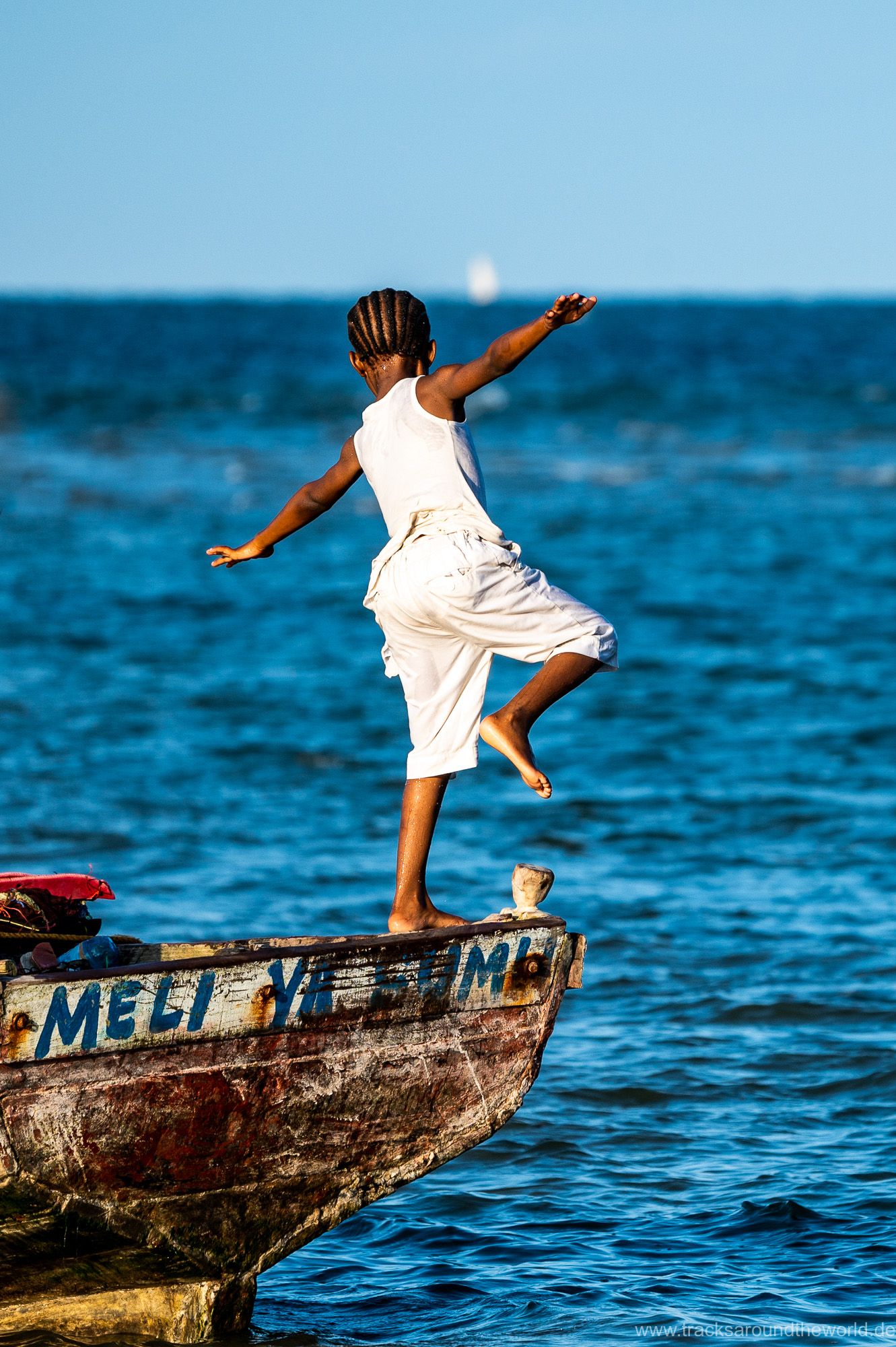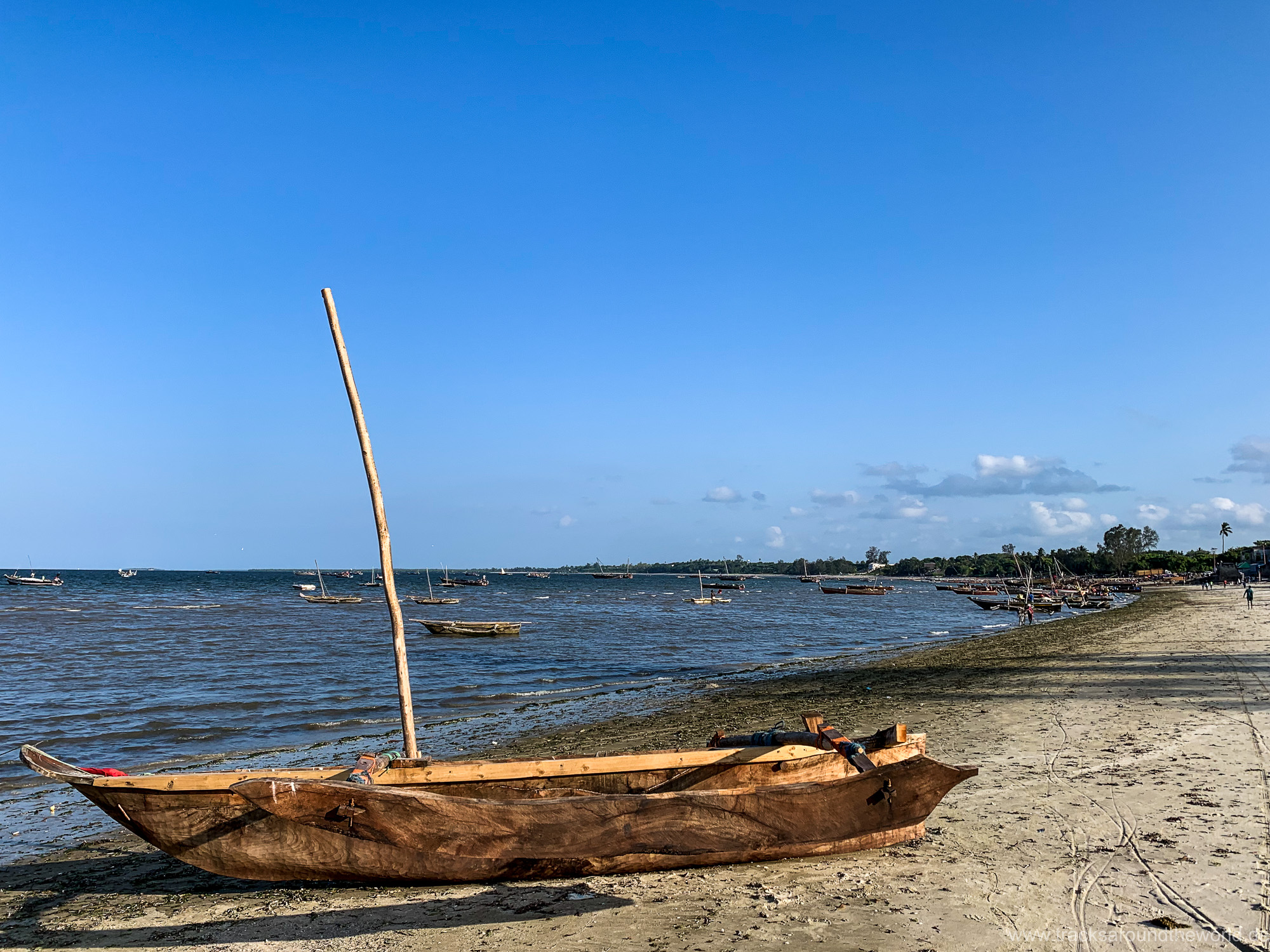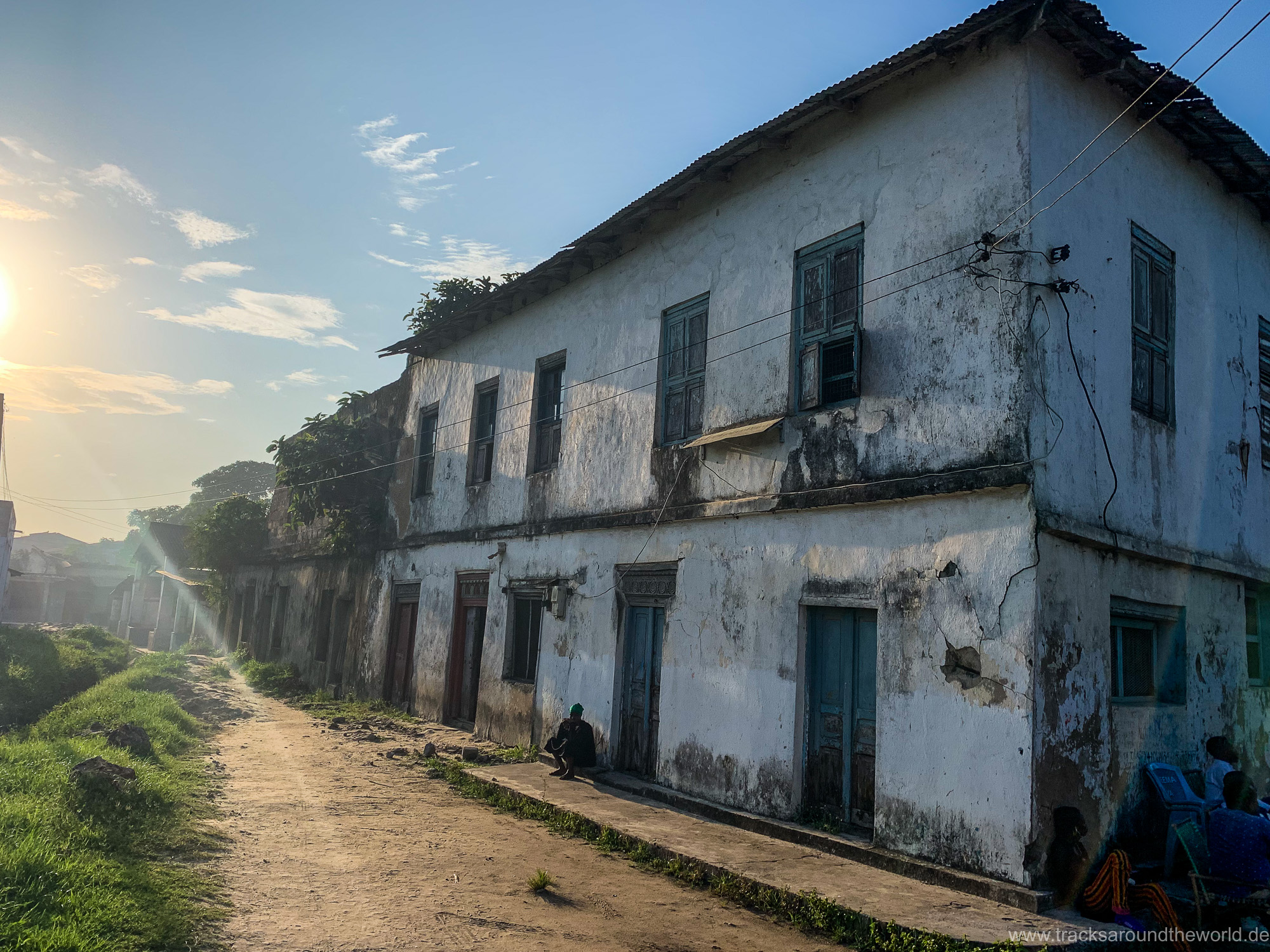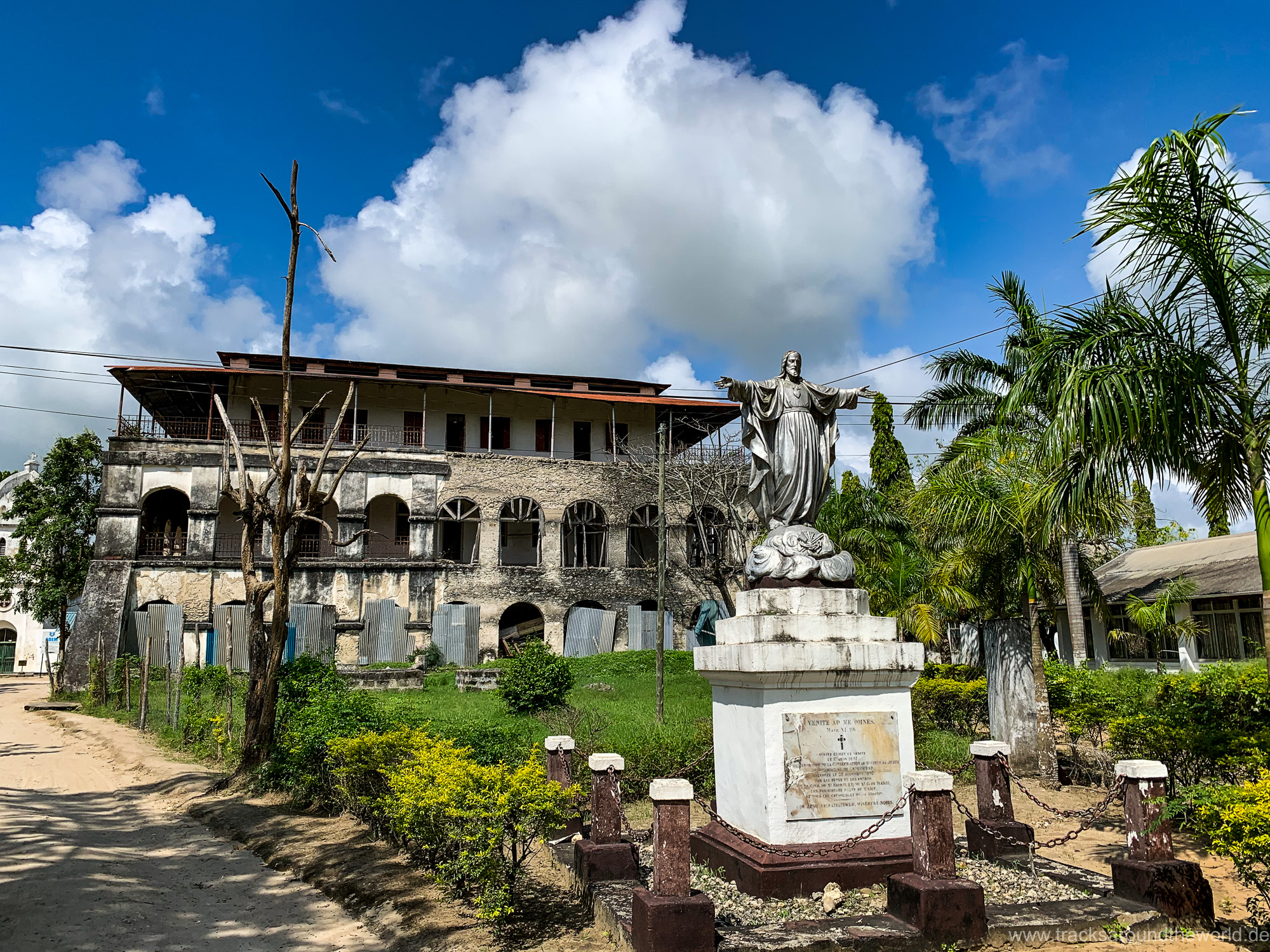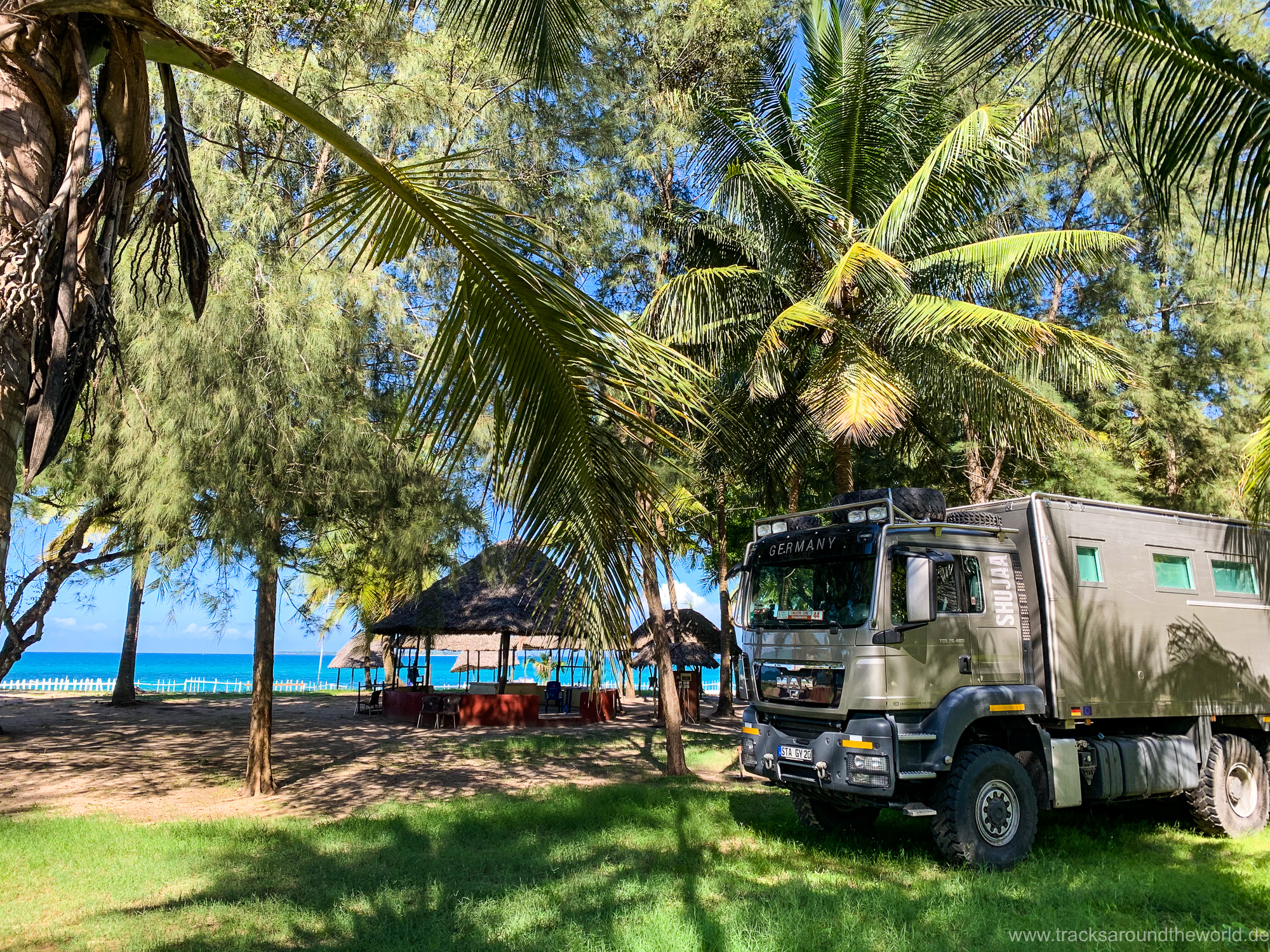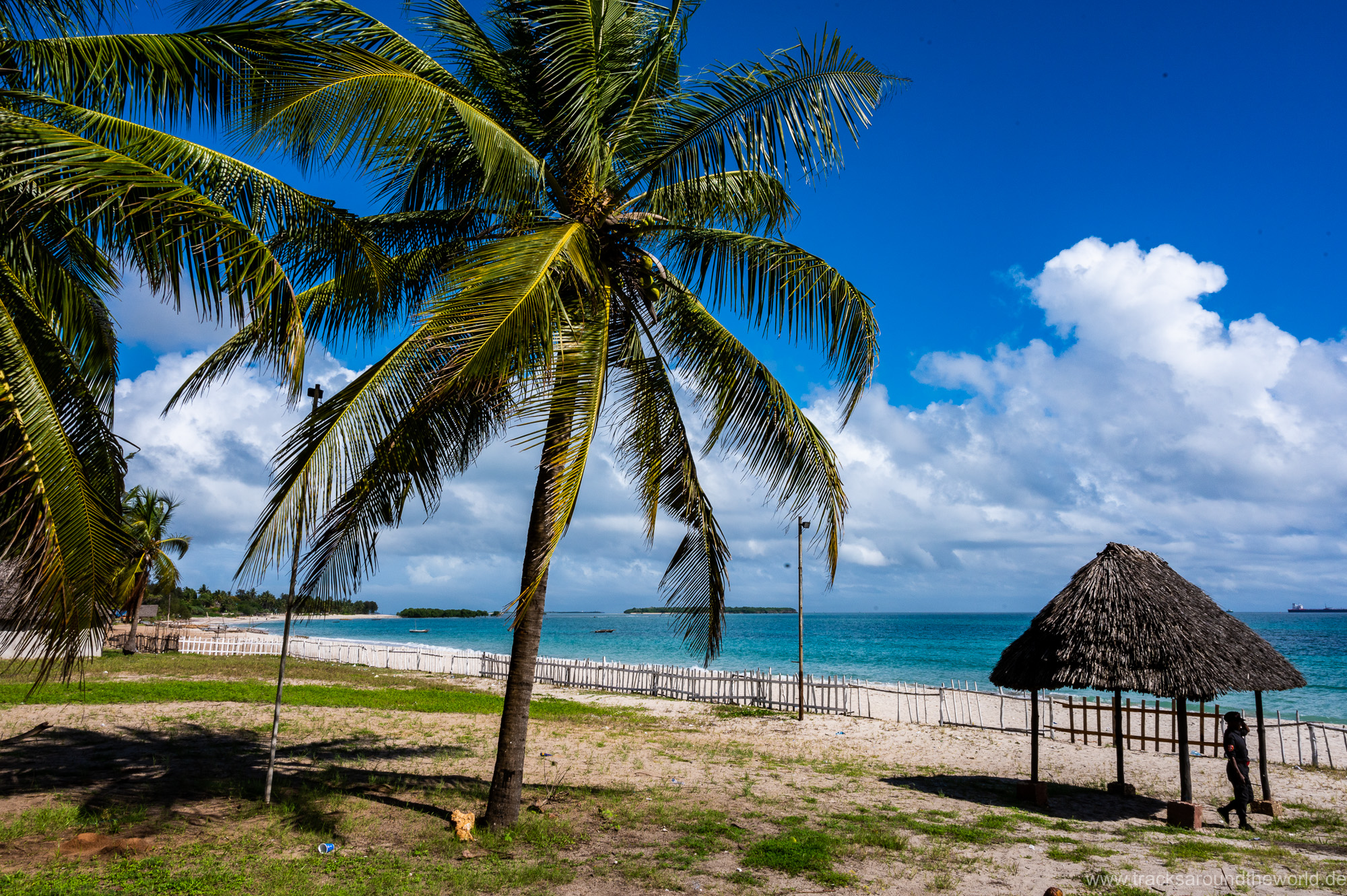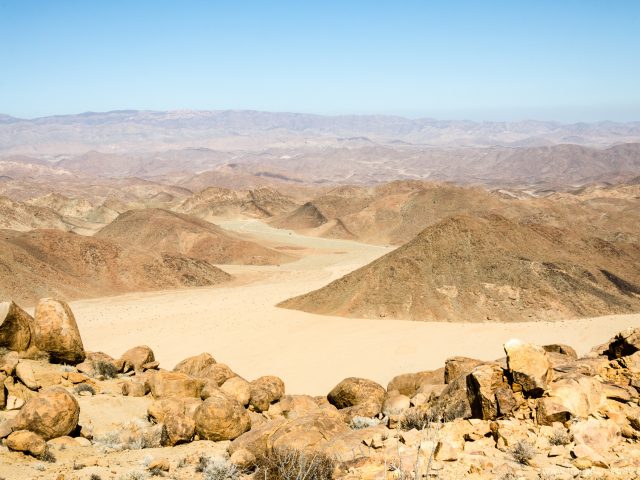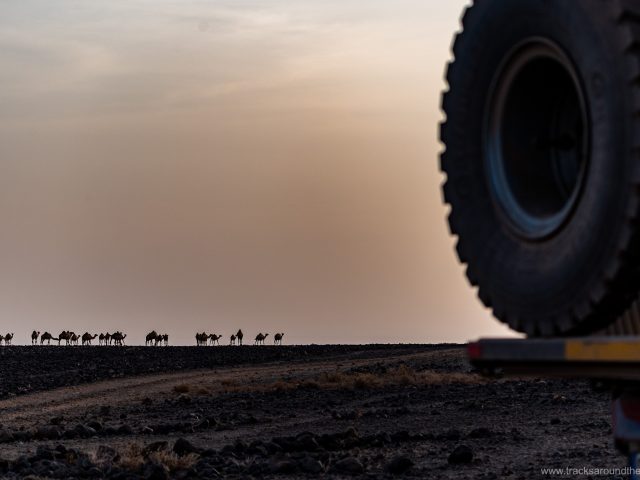Our third border crossing, the one from Malawi to Tanzania, is also an easy one. Immediately we are greeted at the border with the note “there is no Corona in Tanzania” when we enter the immigration office wearing masks and therefore leading to surprised faces. Therefore, we are even more surprised that the first thing they ask us at immigration is about our corona test. As the Tanzanians claim that they have no Corona since May and therefore no corresponding measures are in place, we are quite surprised about this question. As we don’t have an actual test, we are getting our almost four-week-old test from Zambia, which we had “updated” especially for the entry into Malawi and thus we seem to meet the requirements. This is Africa!
Having entered Tanzania, it goes up to 2,300 meters high in the Southern Highlands. We hike to crater lakes, spend the night on trout rivers and enjoy the fresh, pleasant climate. Sometimes sleeping at night without the air conditioning running is also nice again. However, from now on it rains a little bit every day or night … the small rainy season has arrived.
On the way to Mbeya, the big provincial capital in southern Tanzania, we pass by a truck weighing station and since the Tanzanian police are known for their corruption and trivialities, we prefer to reverse. And then, after traveling more than 100,000 km around the world, it happens and we have our first little accident: Because the rear-view camera always needs 1-2 seconds to switch to micro-viewing mode when the reverse gear is engaged and I didn’t wait for this moment we push a jeep, which was stopping directly behind us, a few meters back – although it was on its brakes. In Shujaa we didn’t notice anything until I looked at the rear-view camera and outside we didn’t even see a small scratch. The jeep, on the other hand, is veritably dented at the front, but still drives – size matters!
Now, of course, the African chaos begins: dozens of people passing by, gesticulating wildly and taking part in discussions. Soon the police are on the spot and notes down a few details, then both vehicles have to go to the main police station and the waiting and discussing continues. Since we actually have a workshop appointment to repair our rear lift, which is losing hydraulic oil, and the whole waiting and discussion really annoys me anyway, we split up our tasks: Karin stays with the police, because she is much more relaxed and patient in such situations, and I drive with Shujaa to the workshop to supervise the repair work. This German efficiency approach is, completely unexpected to us, not well received here and they want to put Karin in jail: however, when she relaxedly replies that she only wants to gather a few things from Shujaa for imprisonment, the police officers are suddenly very irritated and let go from this threatening gesture. If our strategy was initially to settle the damage with our Tanzanian / Comesa liability insurance, which is mandatory for the respective border crossings, we then decide to simply settle the damage for the equivalent of 100 euros in cash using. In order for the insurance to pay, both parties would have to appear in court next Monday and we’d rather not have this probably very time-consuming experience.
Stressed a lot by this event, we continue north-east towards Dar es Salaam, spend a night at the Old Farmhouse on the Kisolanza Farm (well known among overlanders), look at the sandstone formations of Isimila and the nice town of Iringa, including great Italian food at “Mama Iringa” and then drive into the beautiful Udzungwa Mountains NP. There we hike through tropical vegetation to the Sanje waterfalls – the highest waterfalls in Tanzania, which rush down in three stages. Beautiful!
The whole of southern Tanzania is still very authentic, no tourists and the people are friendly – but not quite as welcoming as in Malawi. After Shujaa received the first car wash in the town of Morogoro after two months of travel, our journey continues towards the coast. The heavy traffic, which has increased significantly since Morogoro, continues to increase the closer we get to Dar es Salaam. The main problem, however, are the trucks driving uphill only with 10-20 km/h, in combination with permanent overtaking and speed bans and the traffic policemen crouching behind almost every tree. This means that the average speed drops considerably despite the overall good roads. In order to avoid the biggest traffic chaos and police controls around Dar, we first go to Bagamoyo, north of Dar – based on a recommendation of Jutta and Gerd, whom we met some days before and who have been traveling with their KAT in Africa for four years.
For the first time since our trip through Mozambique and South Africa we are at the Indian Ocean again. We stay for two nights in the fantastically manicured garden of the Traveller’s Lodge, go for a walk on the beach and look at the very morbid (not to say dilapidated) ruins from the former German colonial era at Bagamoyo. The Arabic / Indian influence on the coast is also evident in the form of the food on offer – we eat very tasty curries twice and Karin is enthusiastic. Then we cross Dar and find a very nice beach outside the city in the south (in the south the beaches are much nicer than in the north of Dar). Here we can also leave Shujaa here when we go to Zanzibar for a week.




